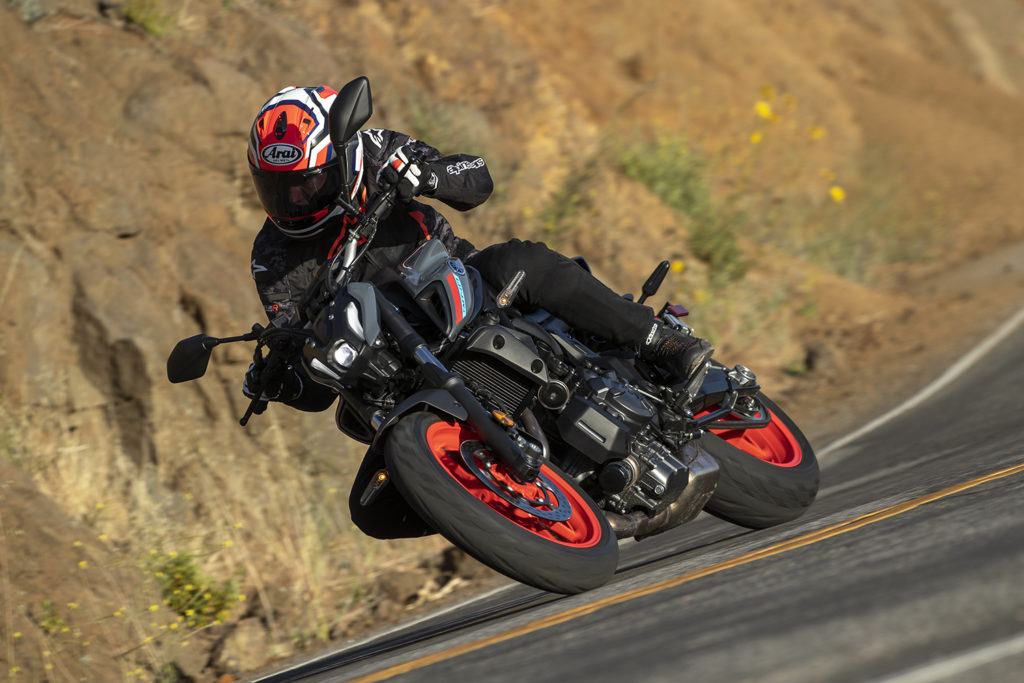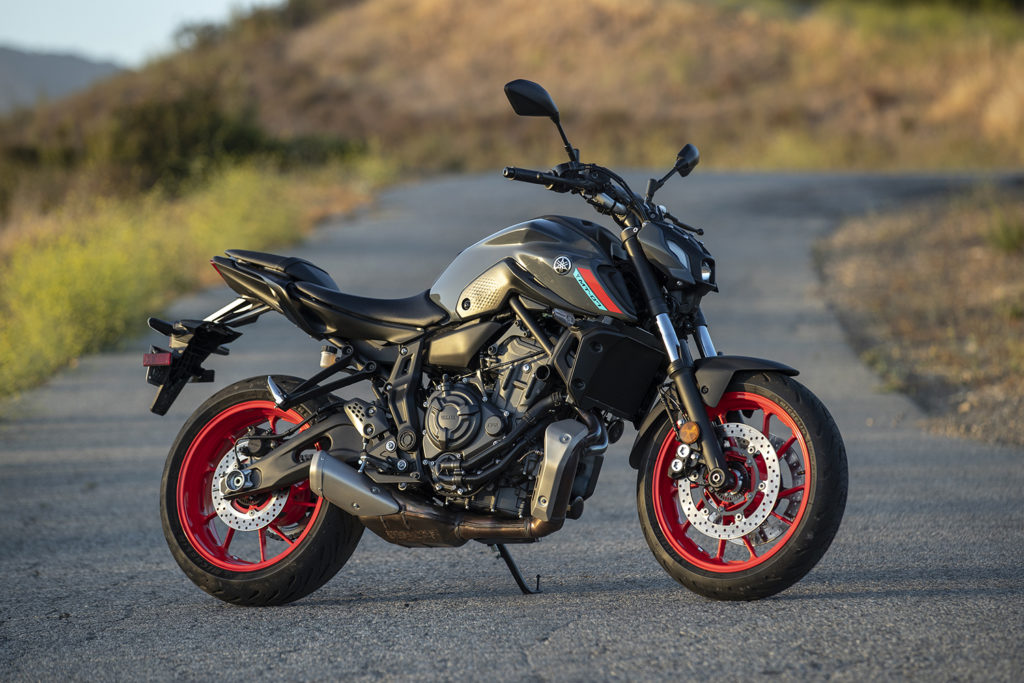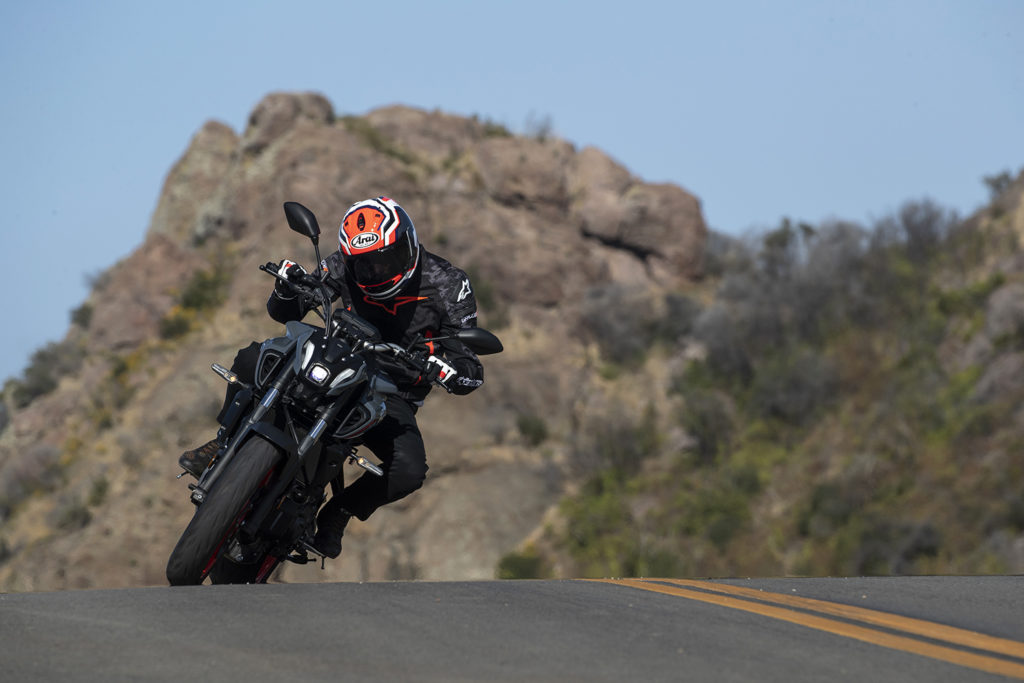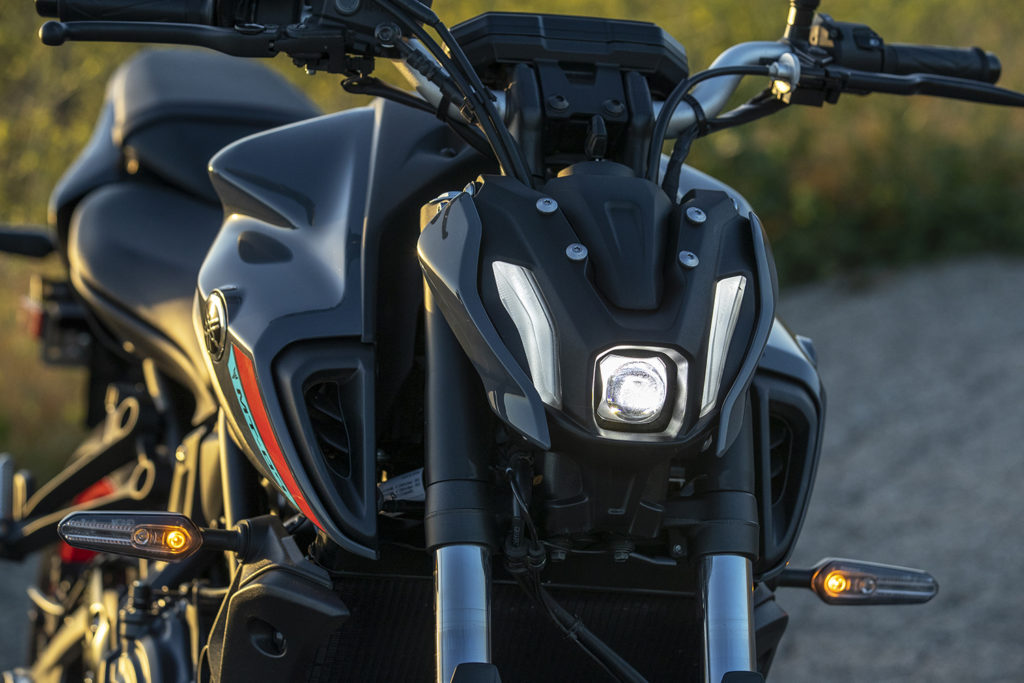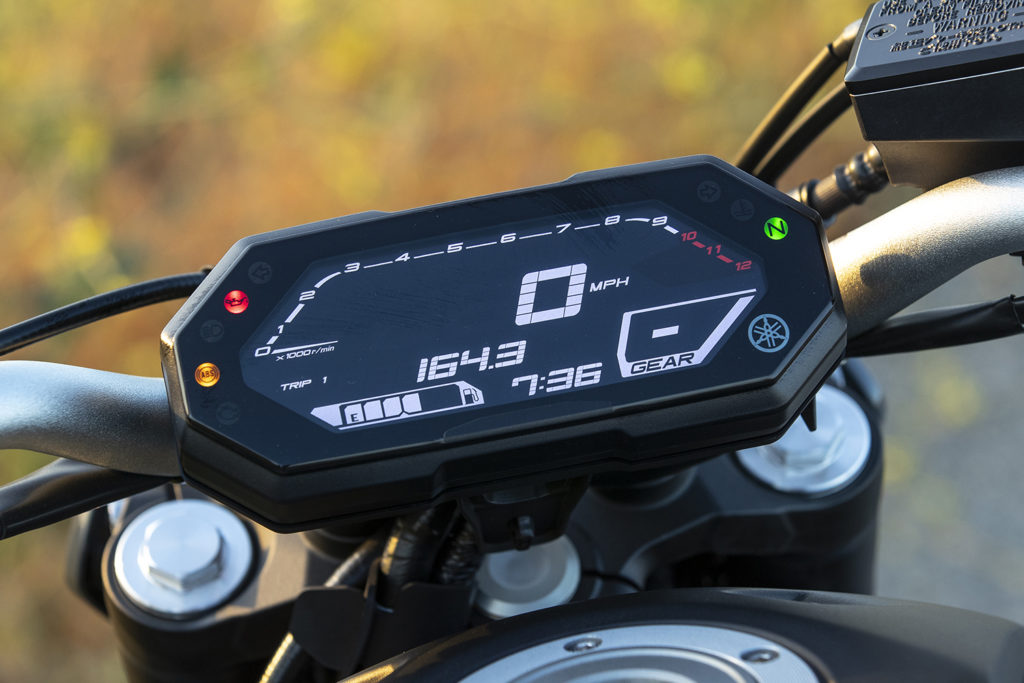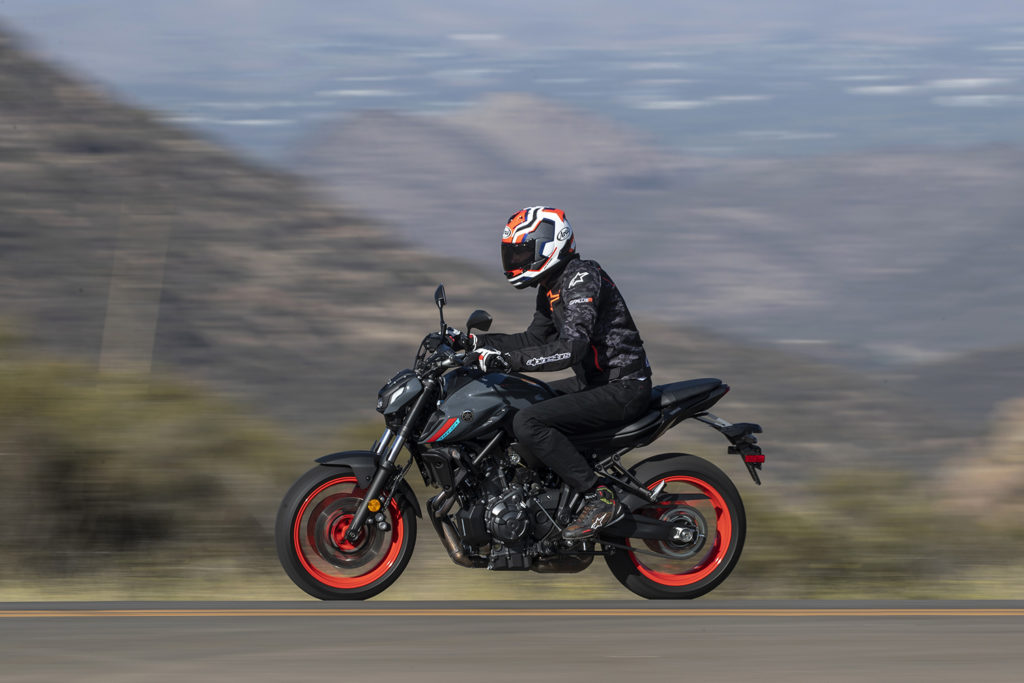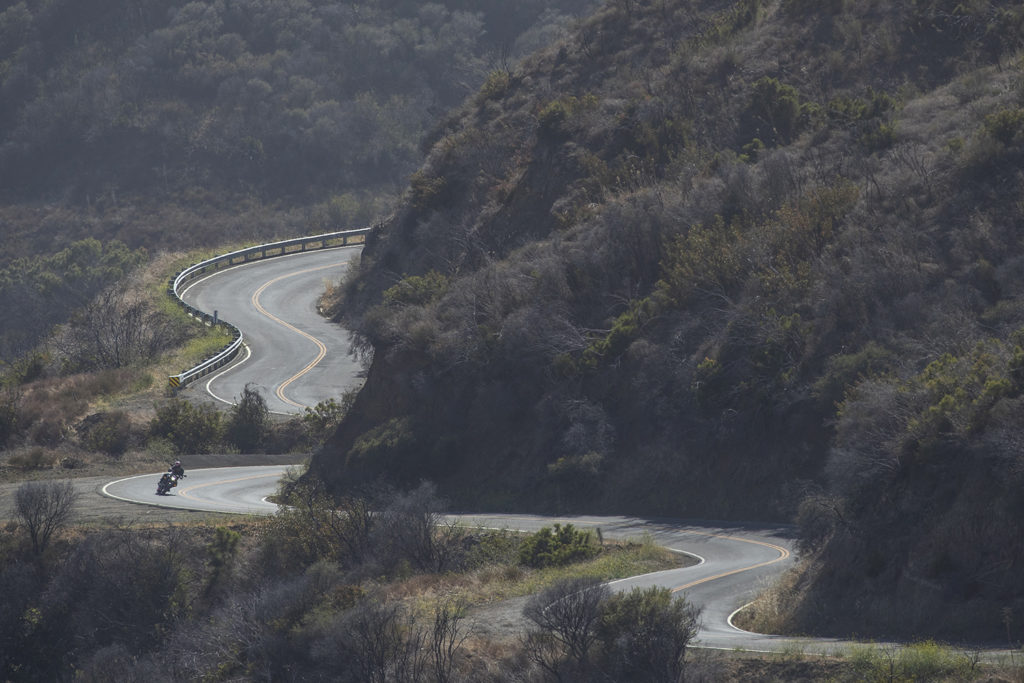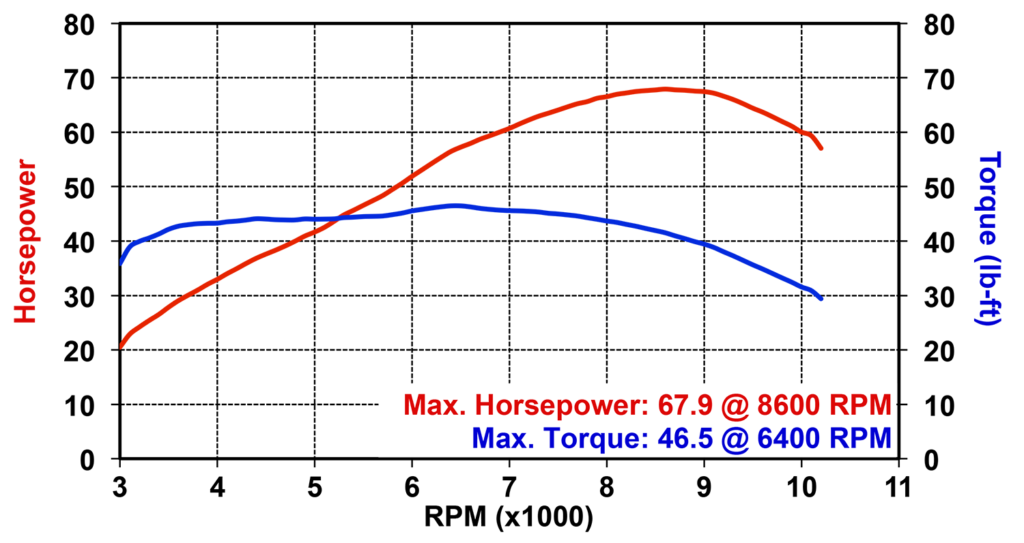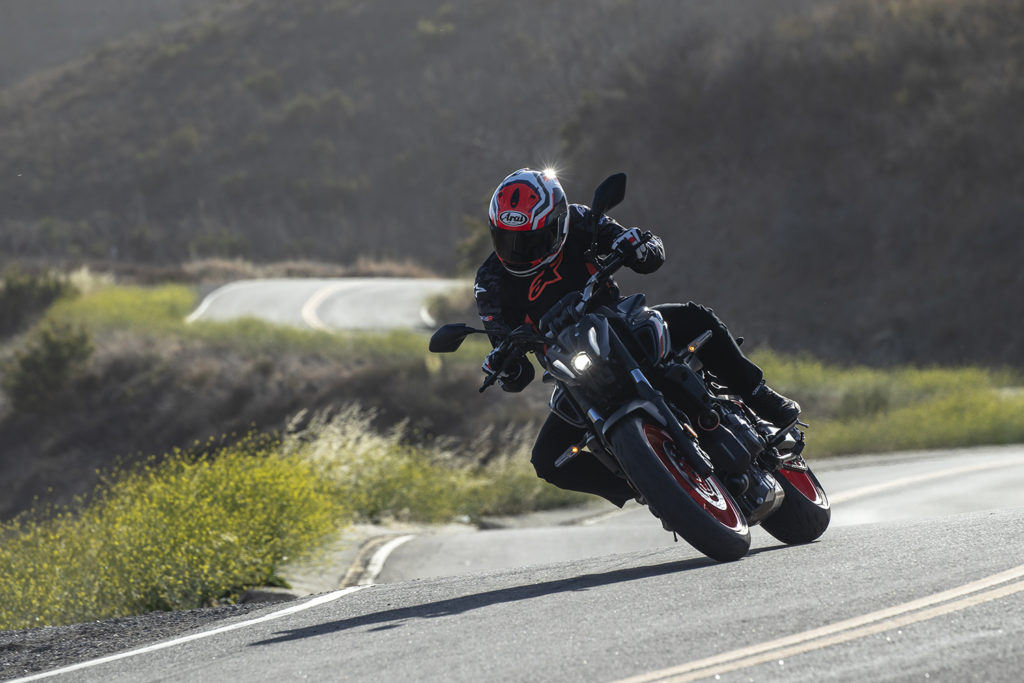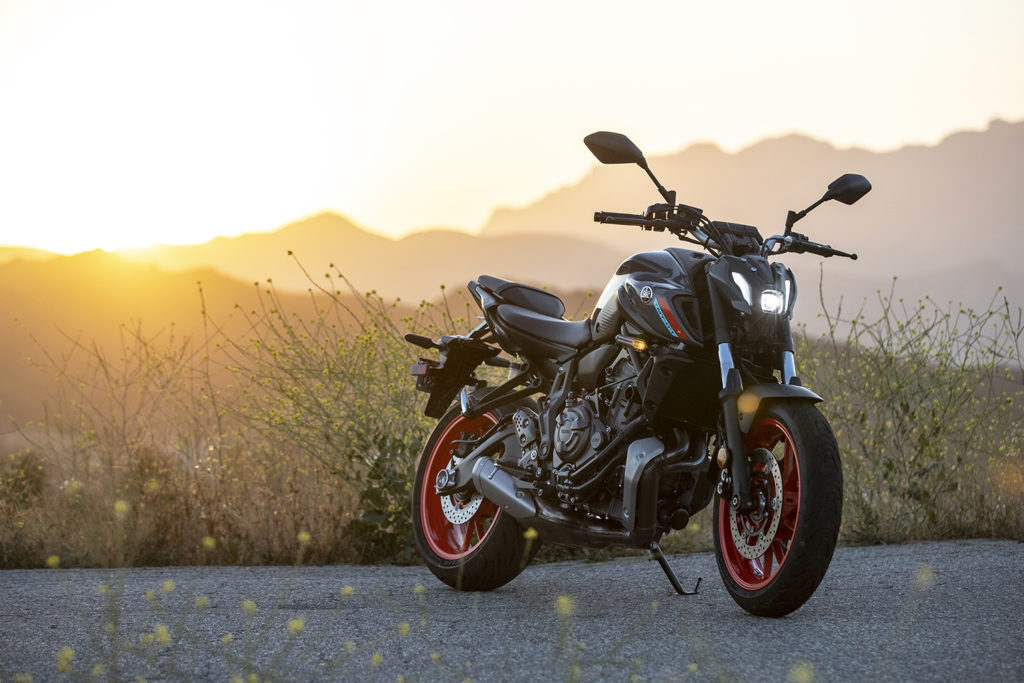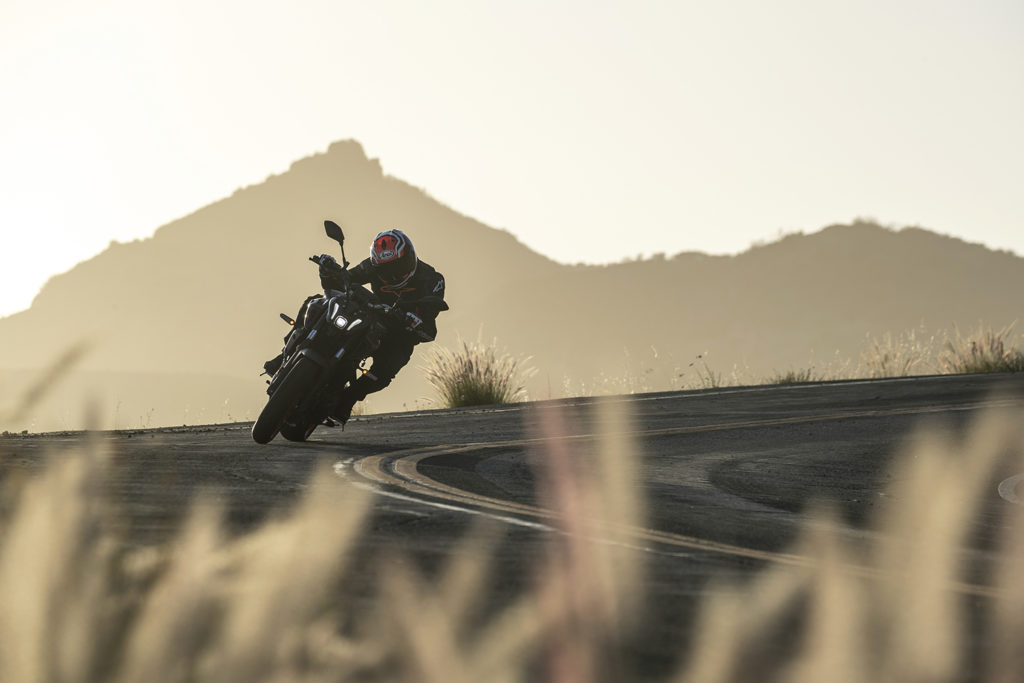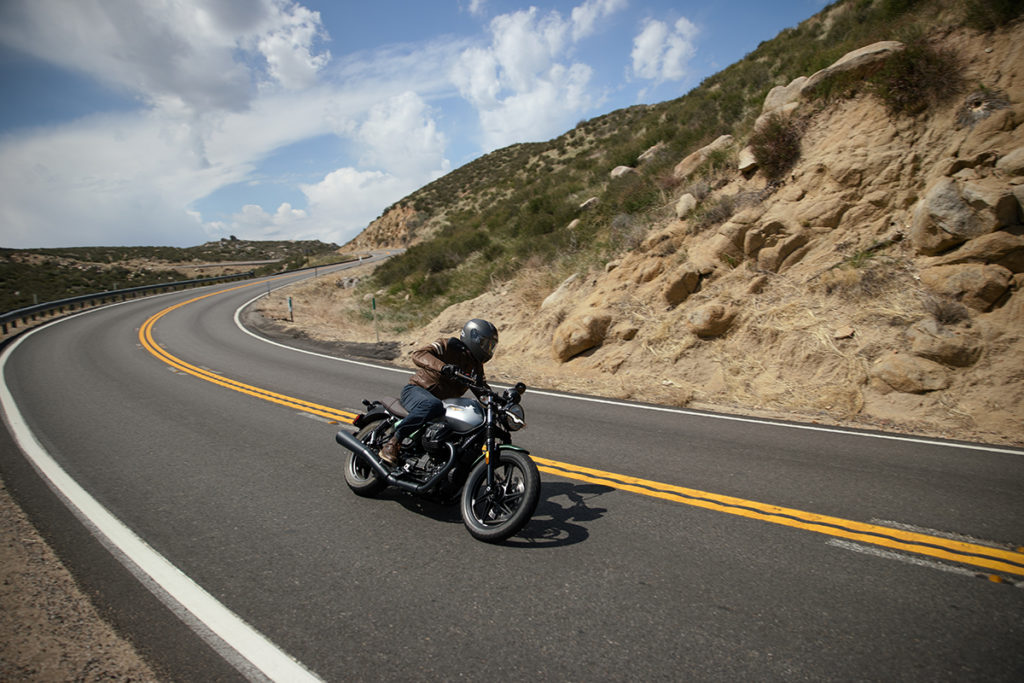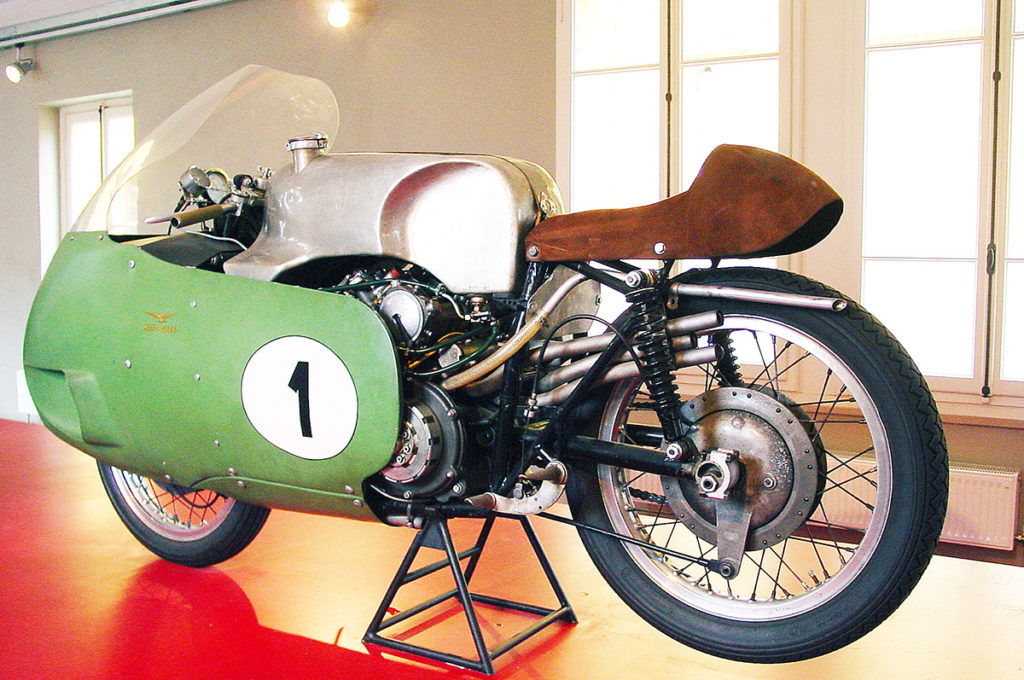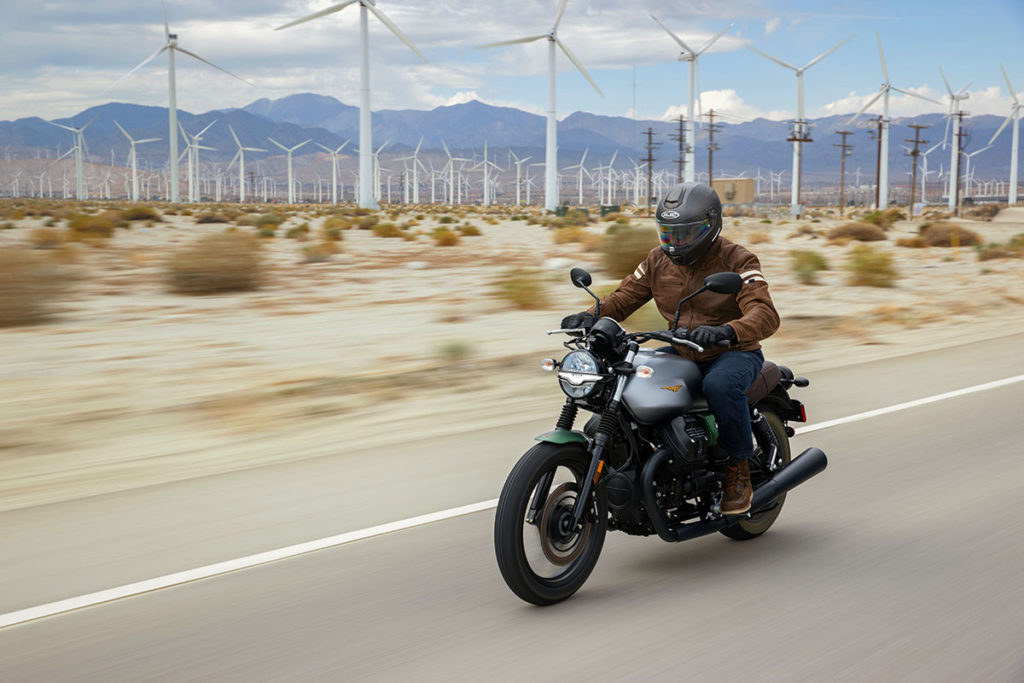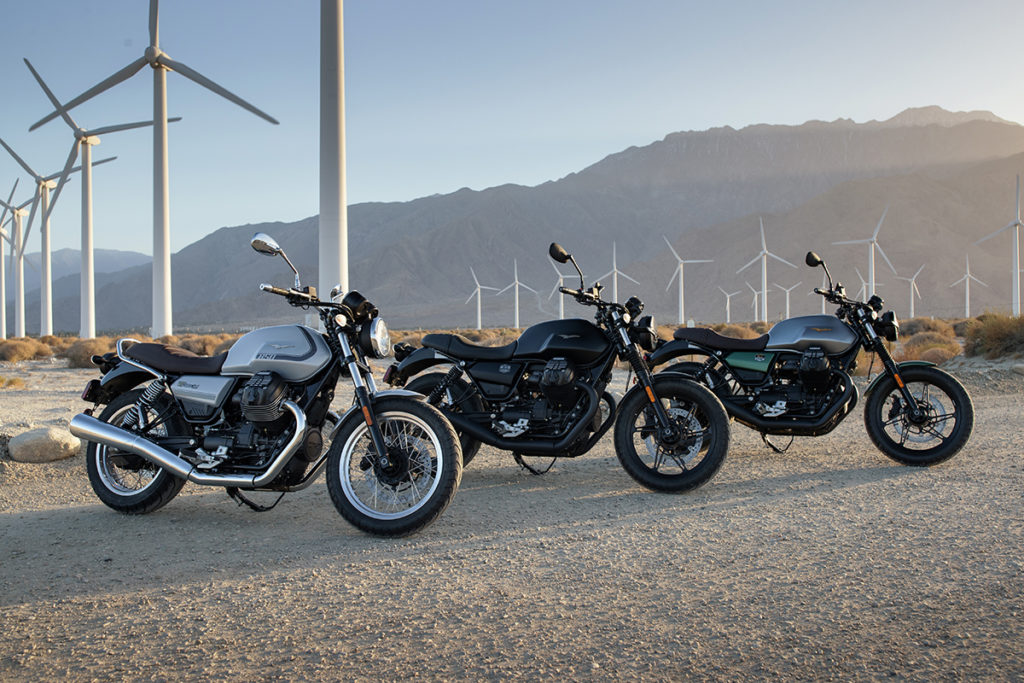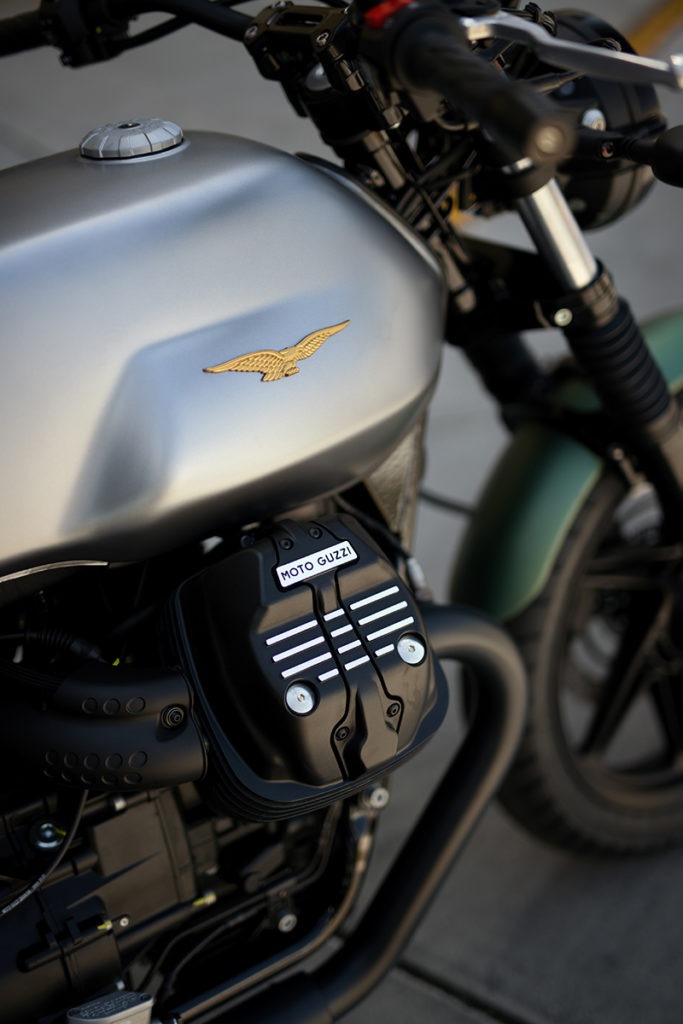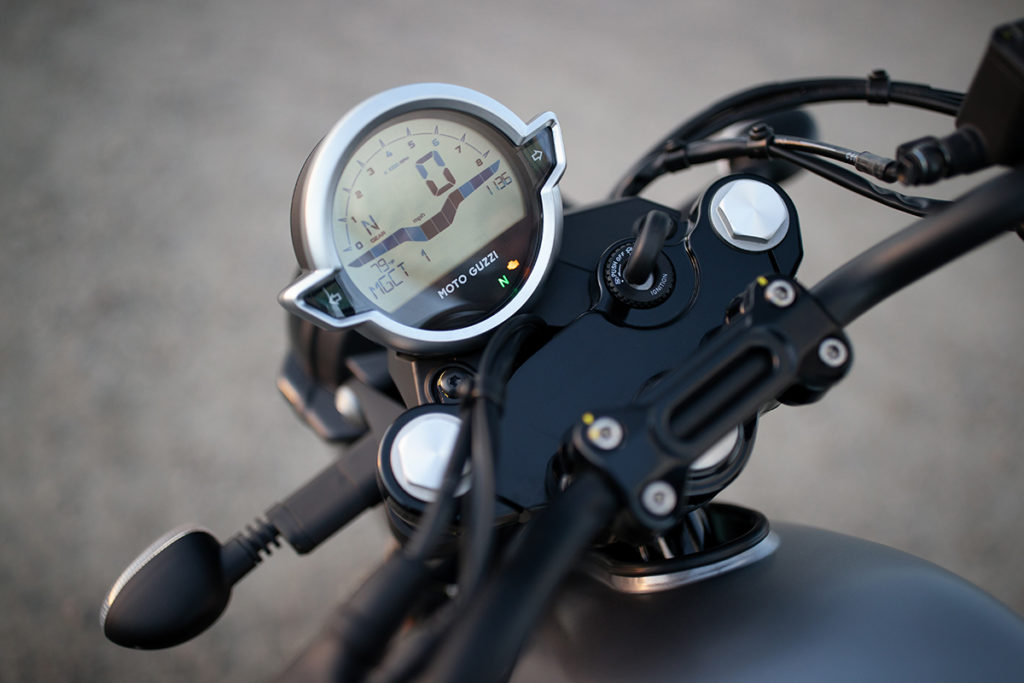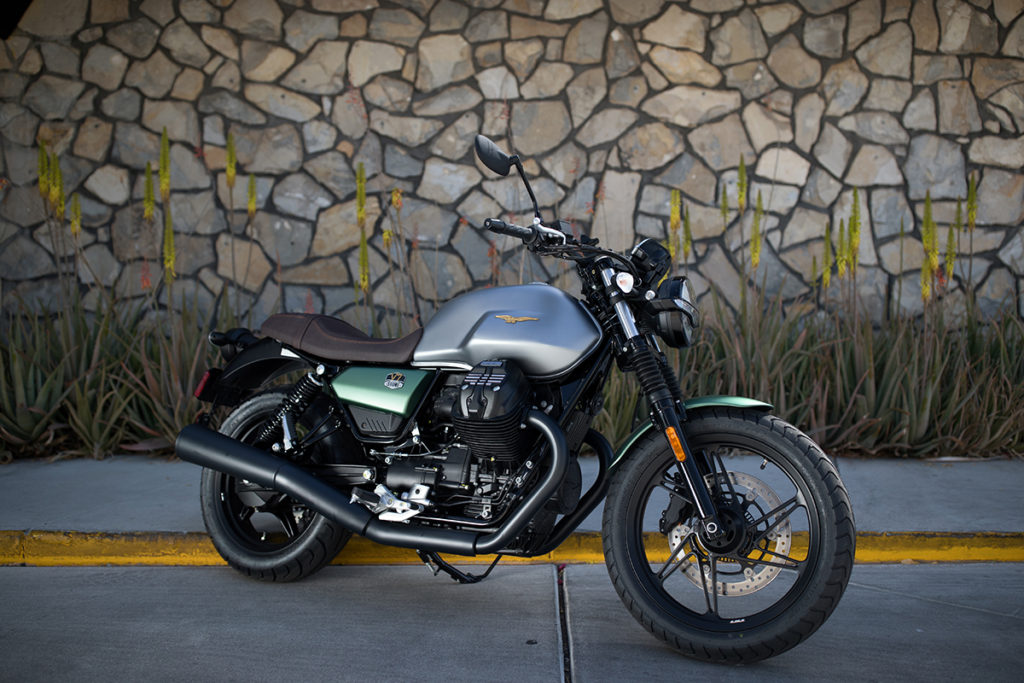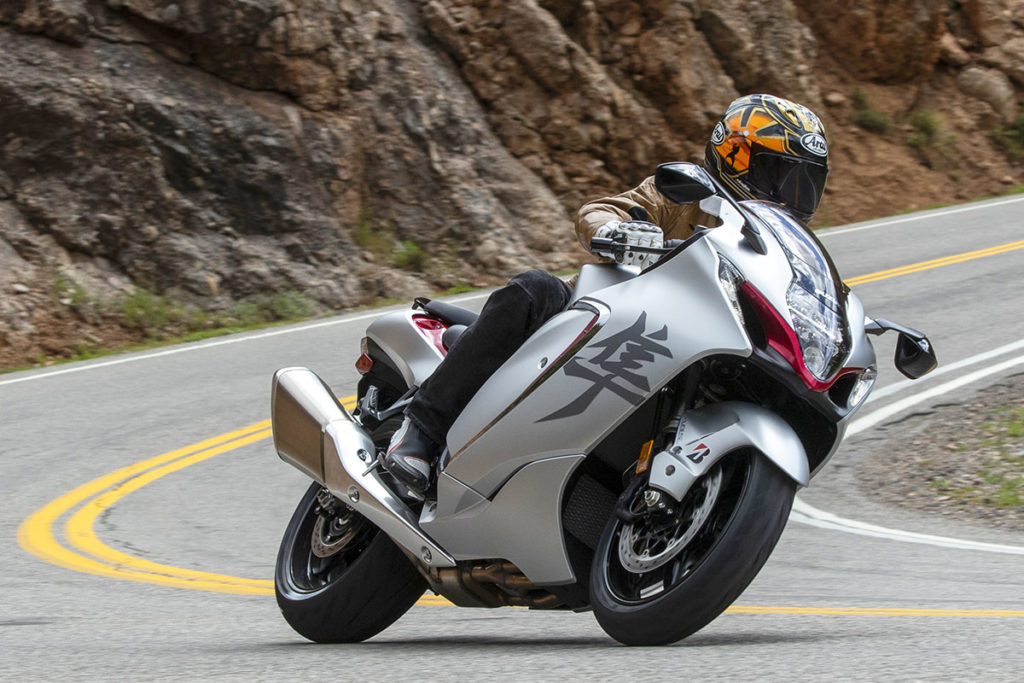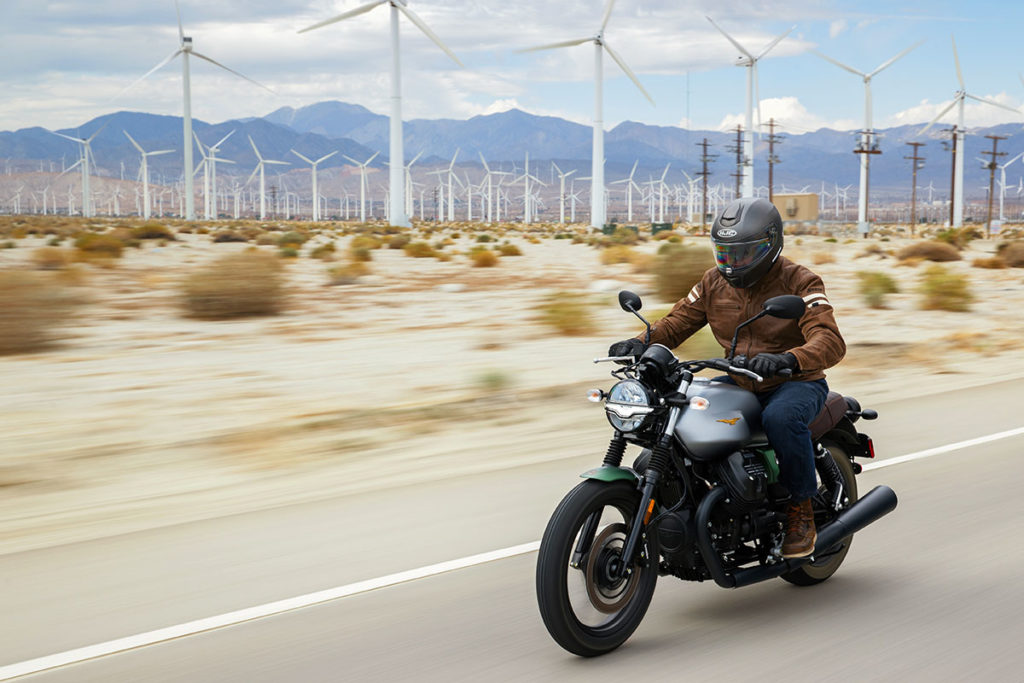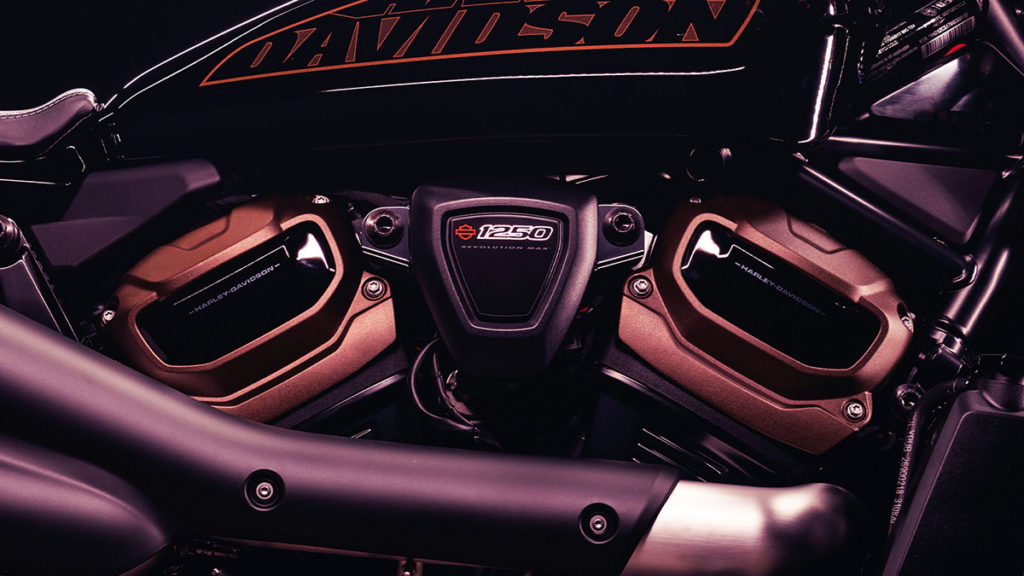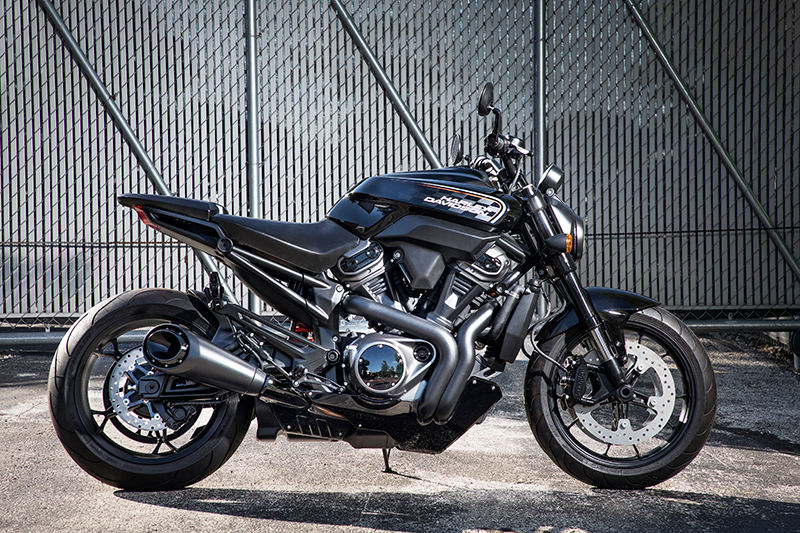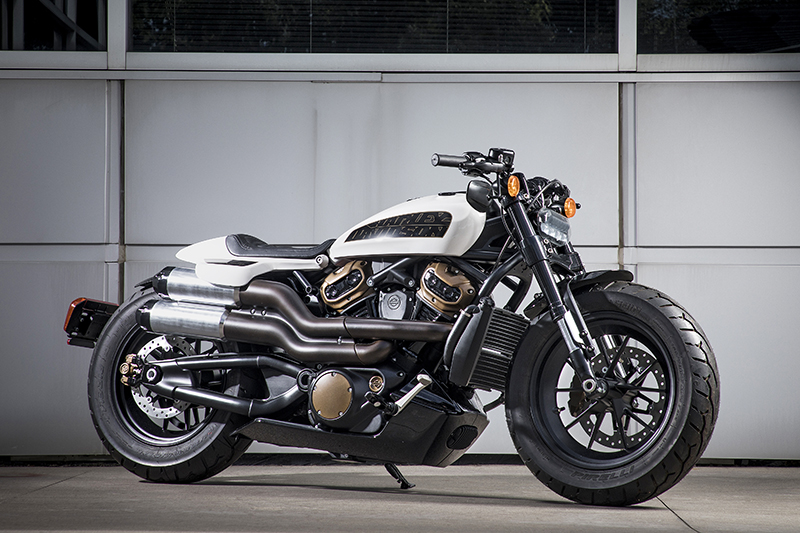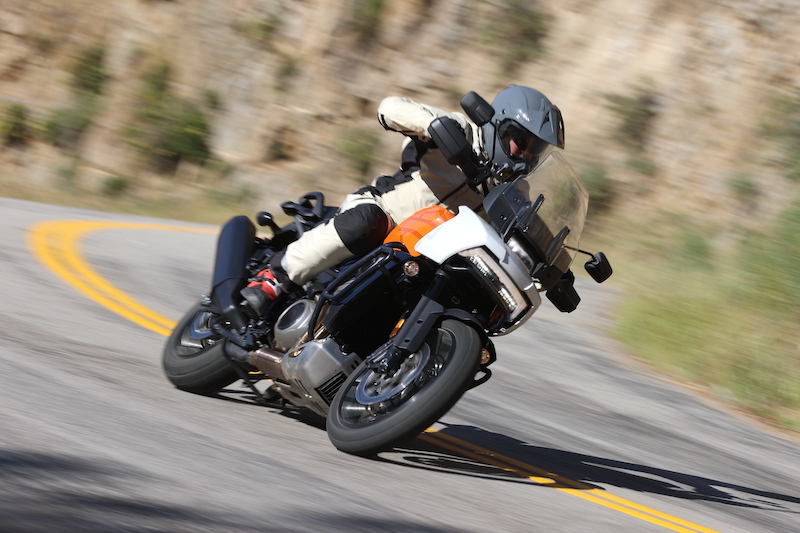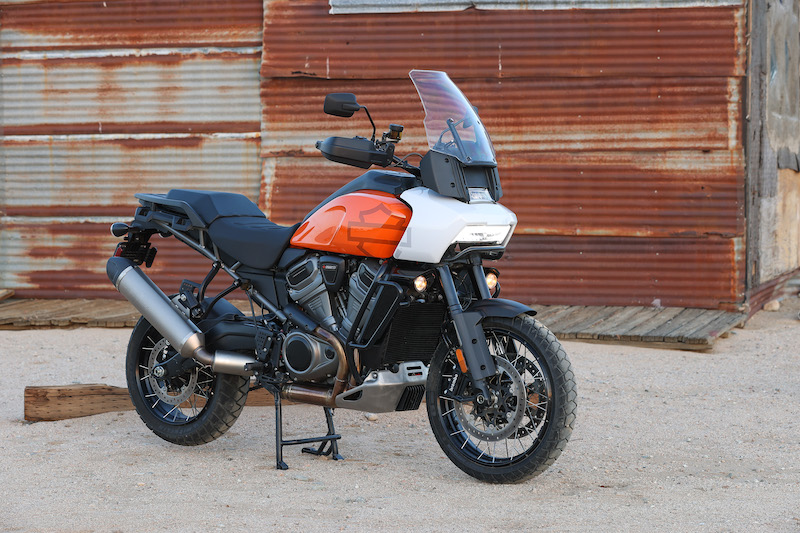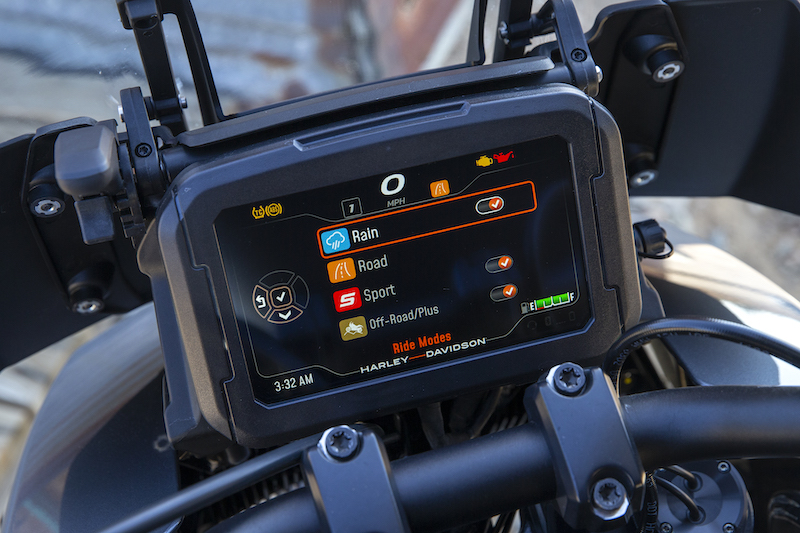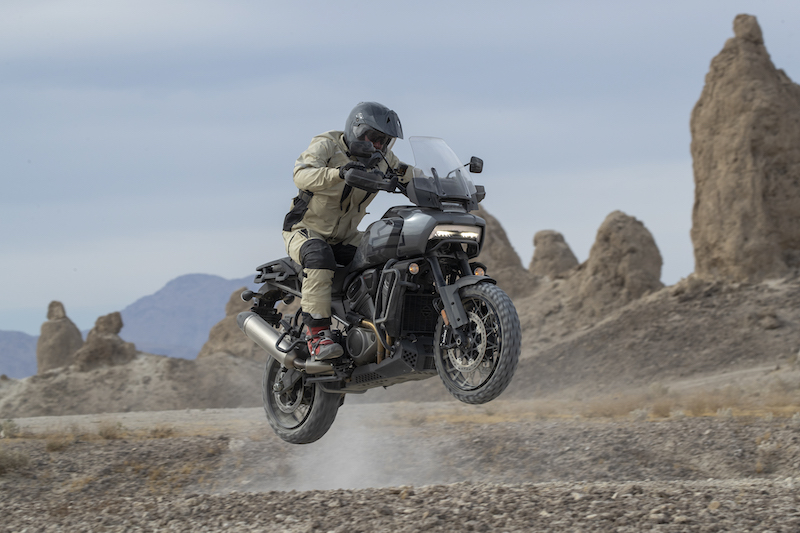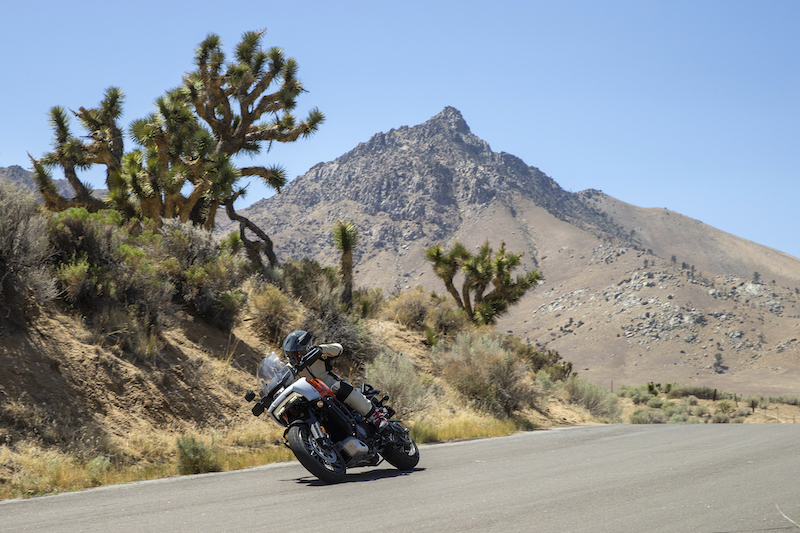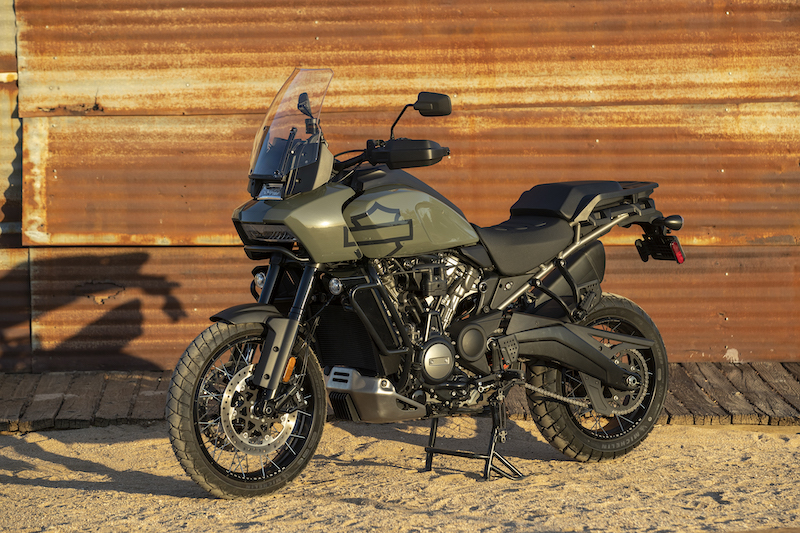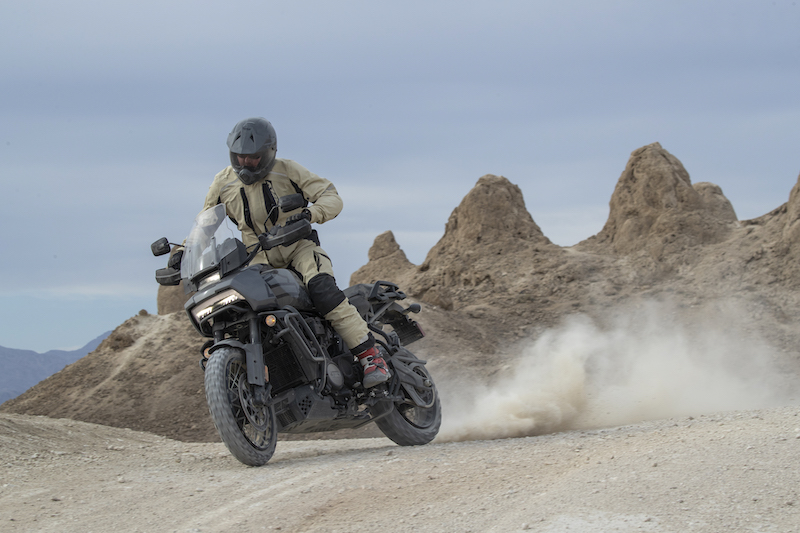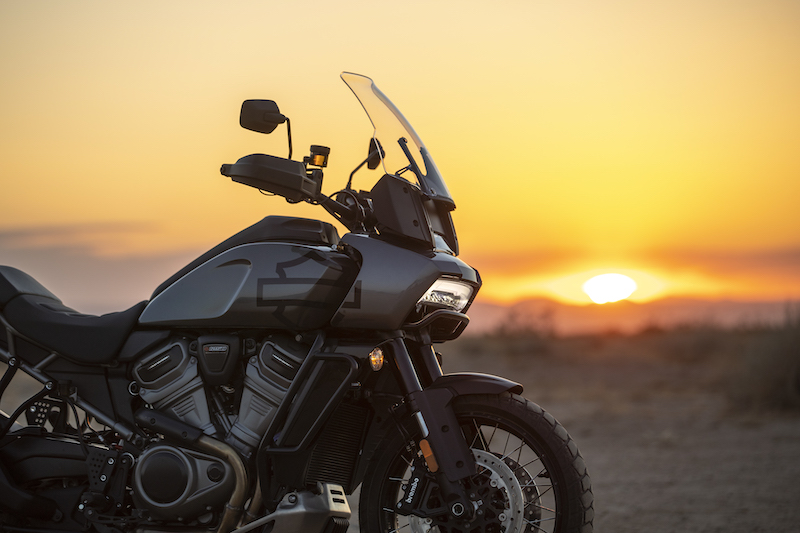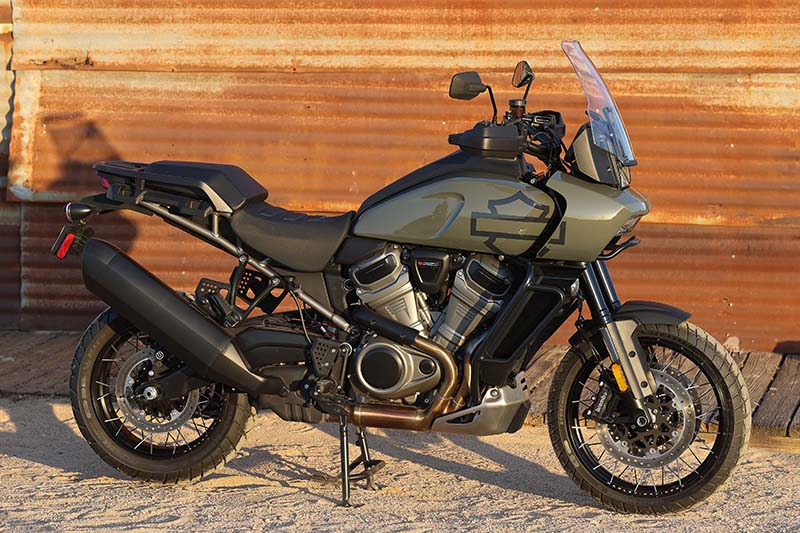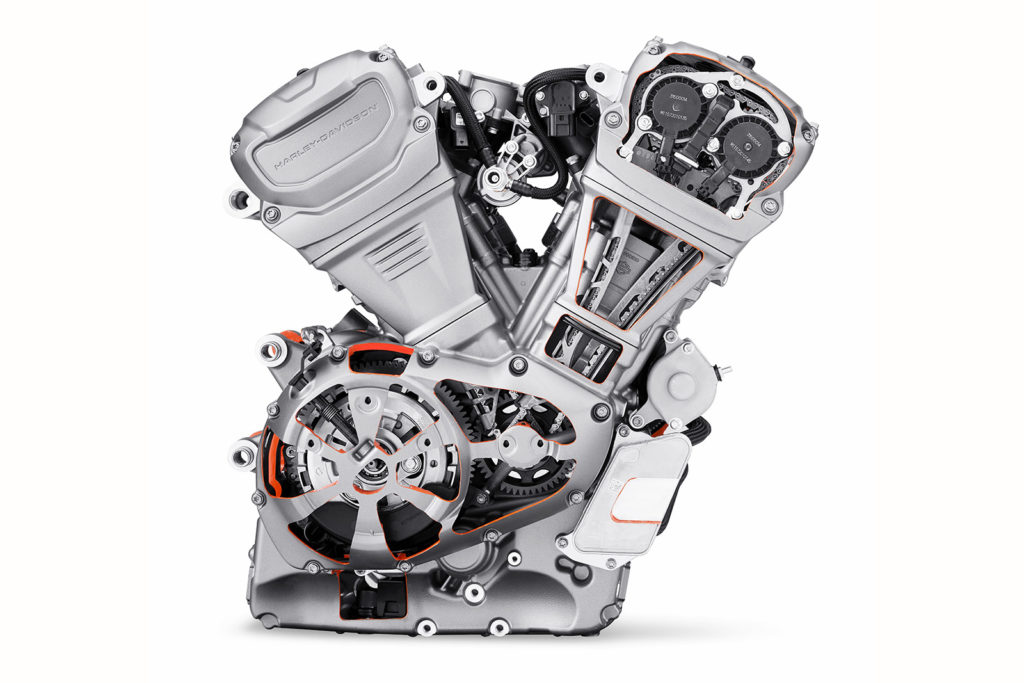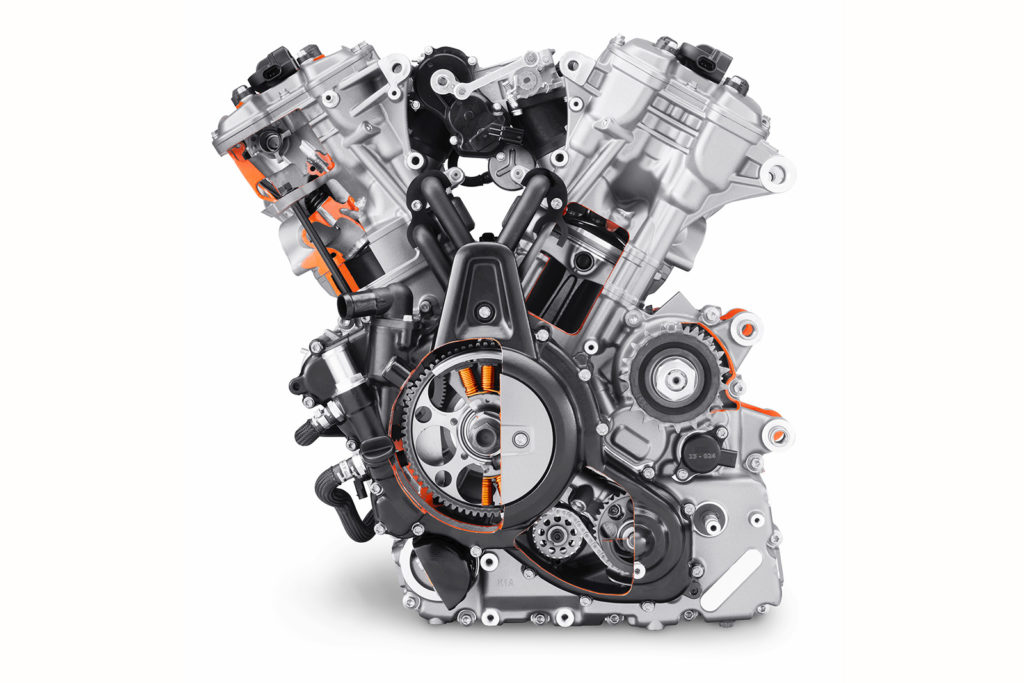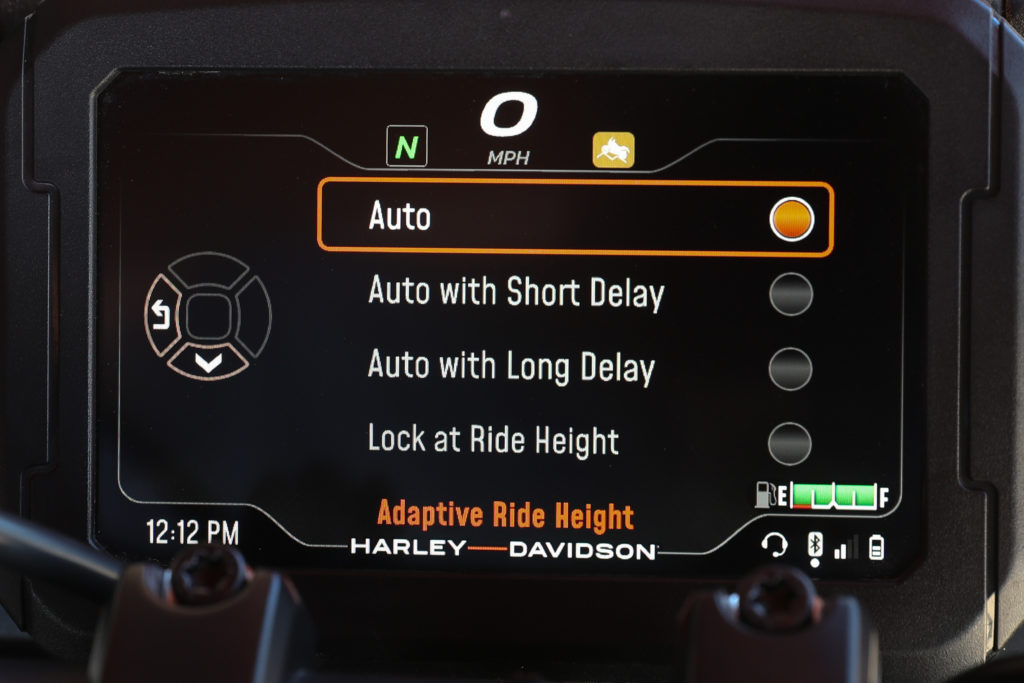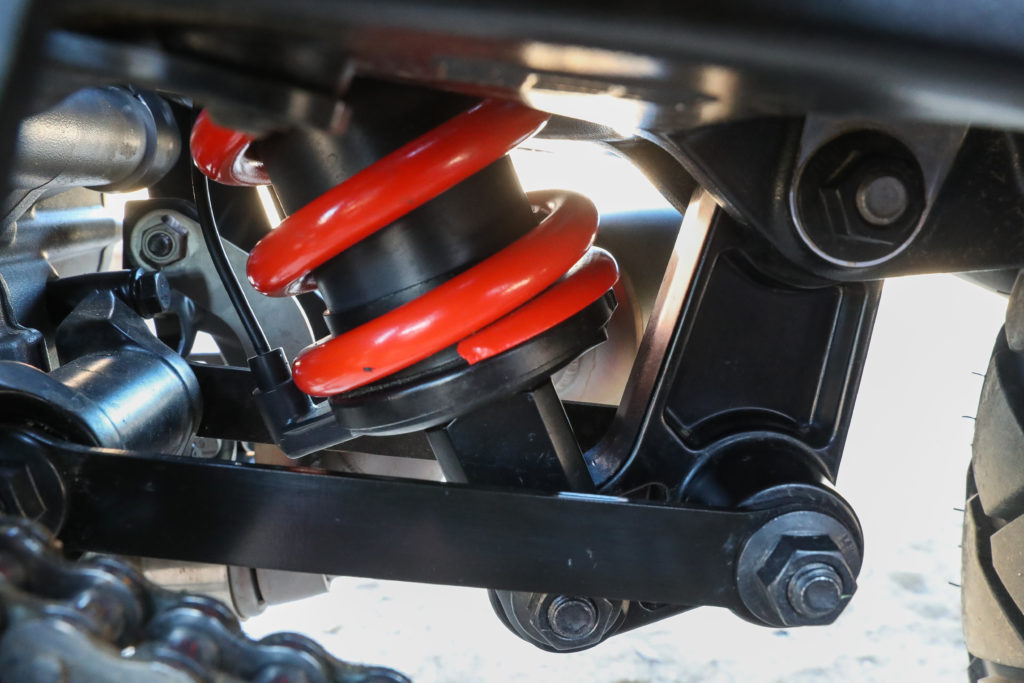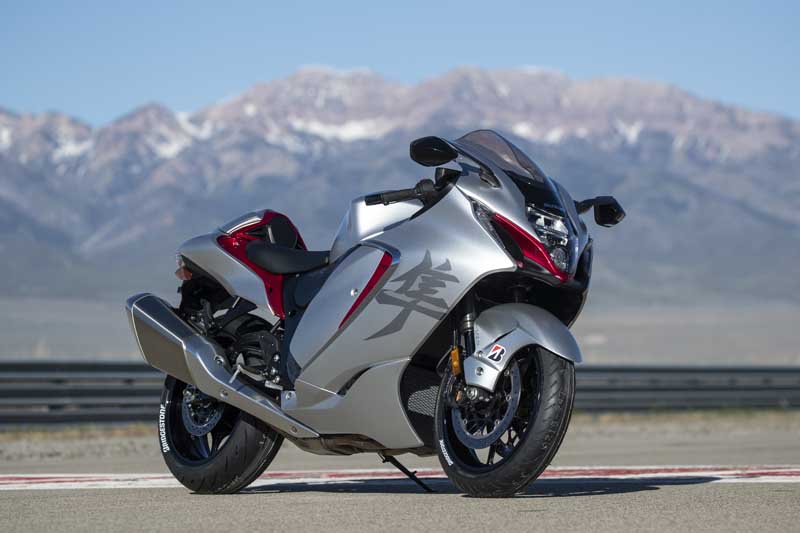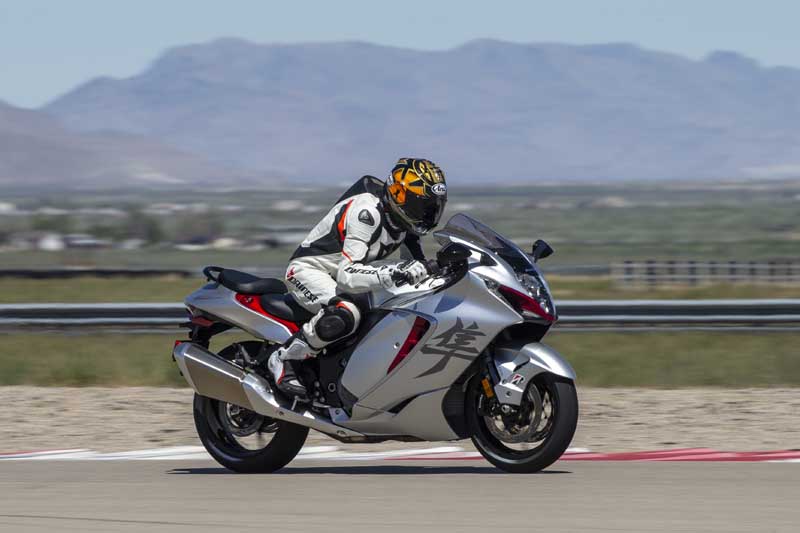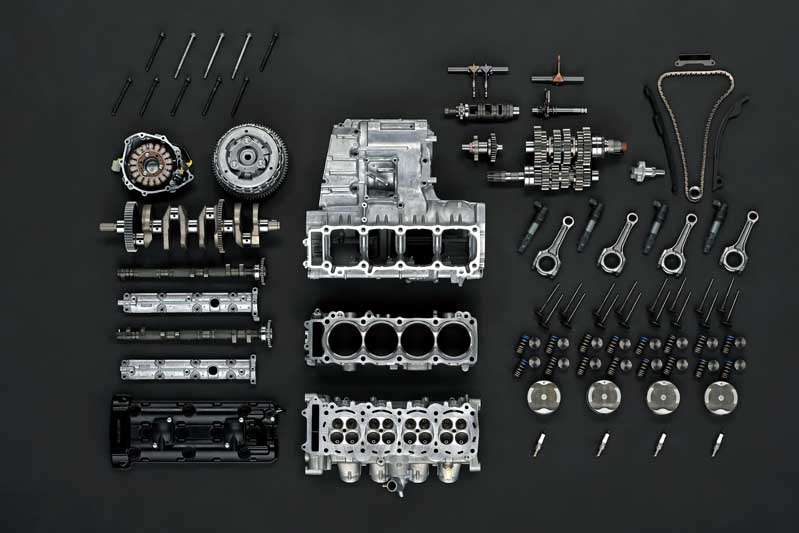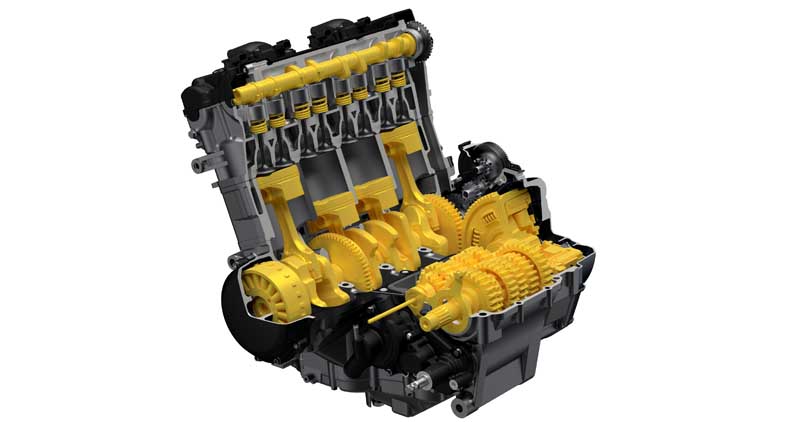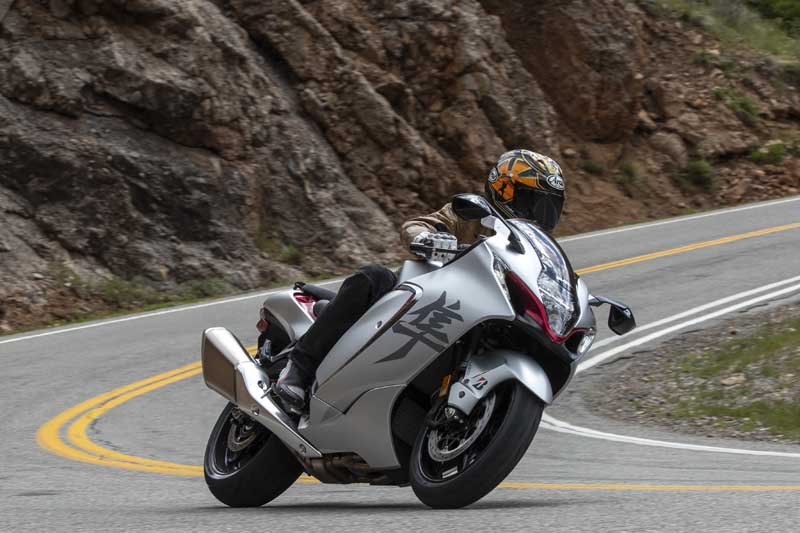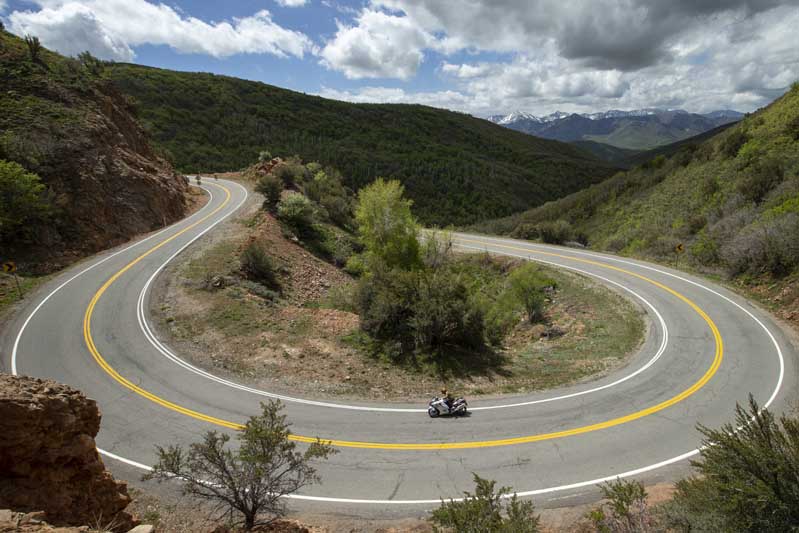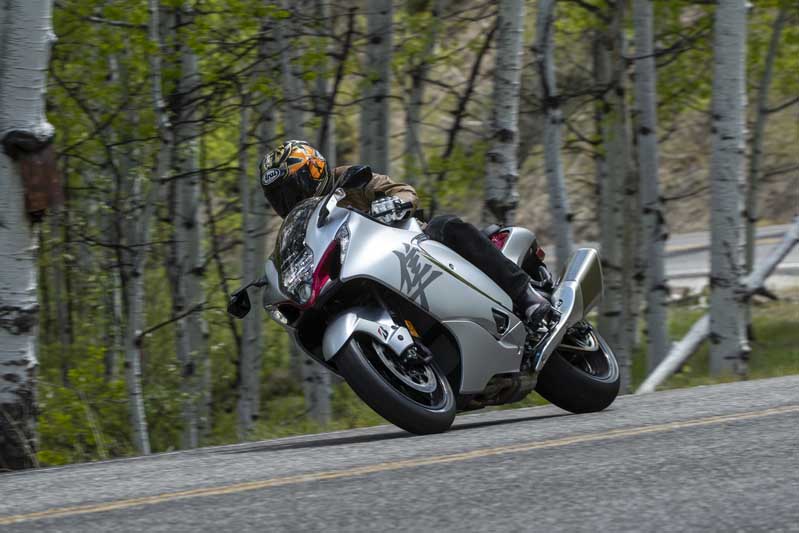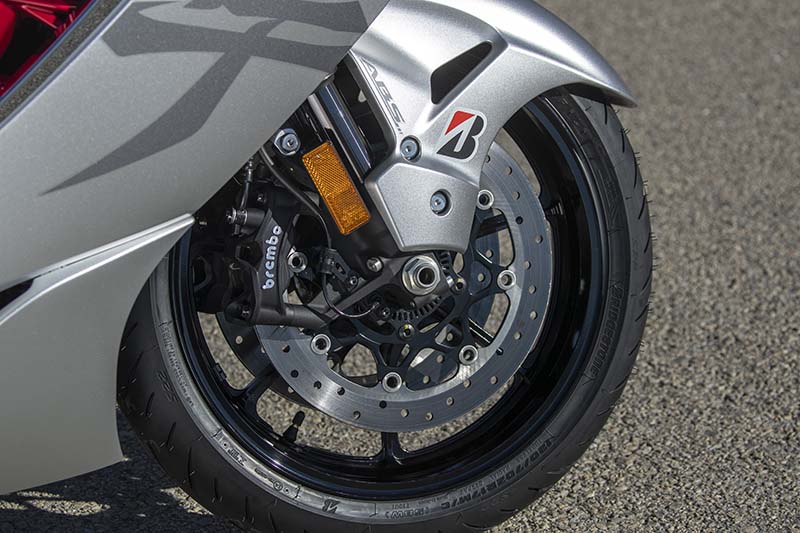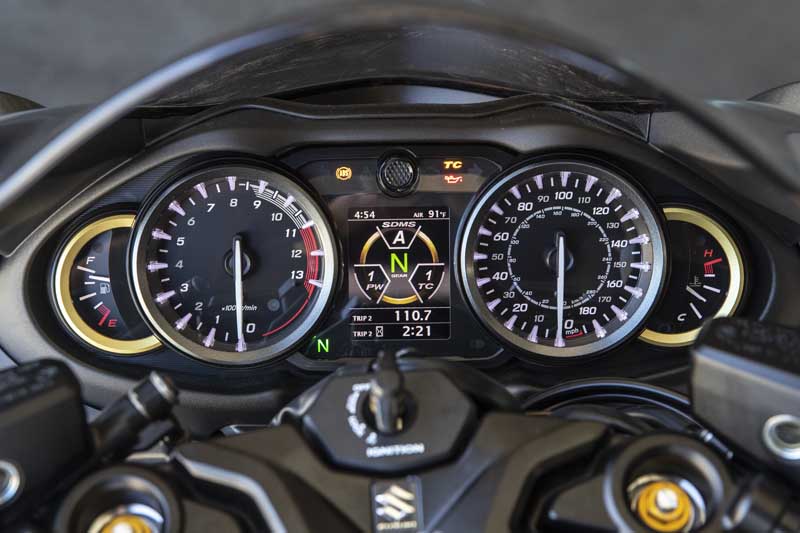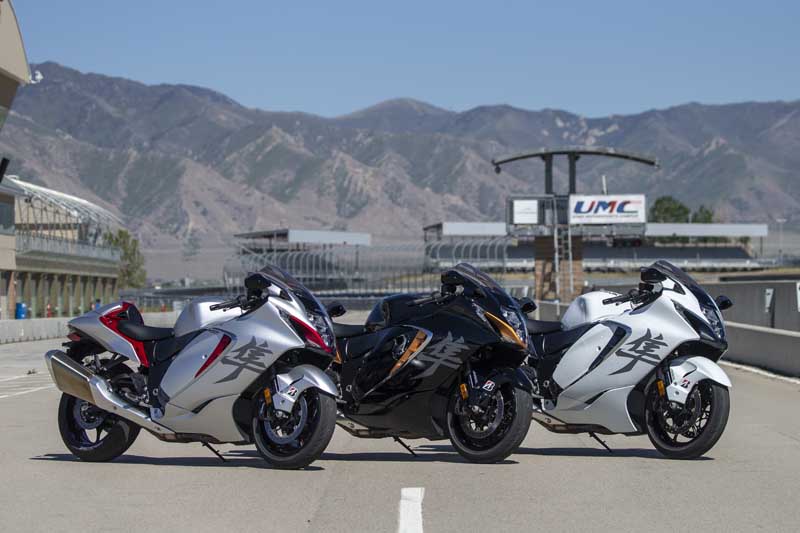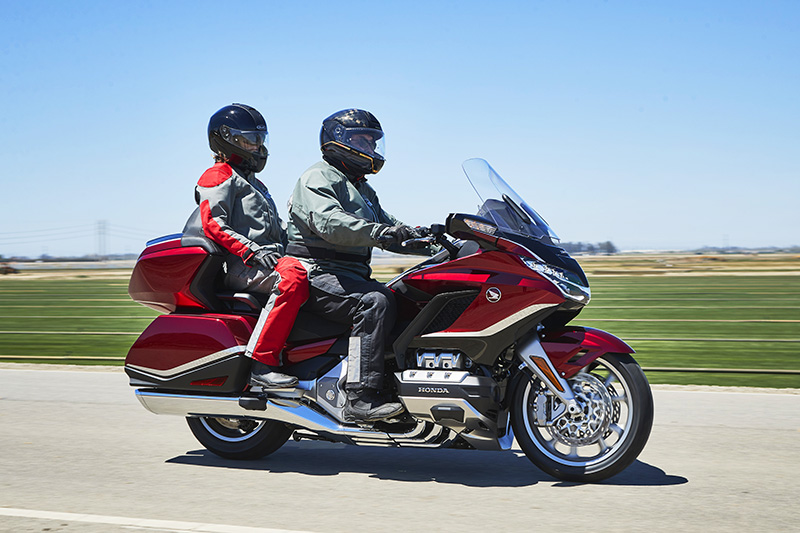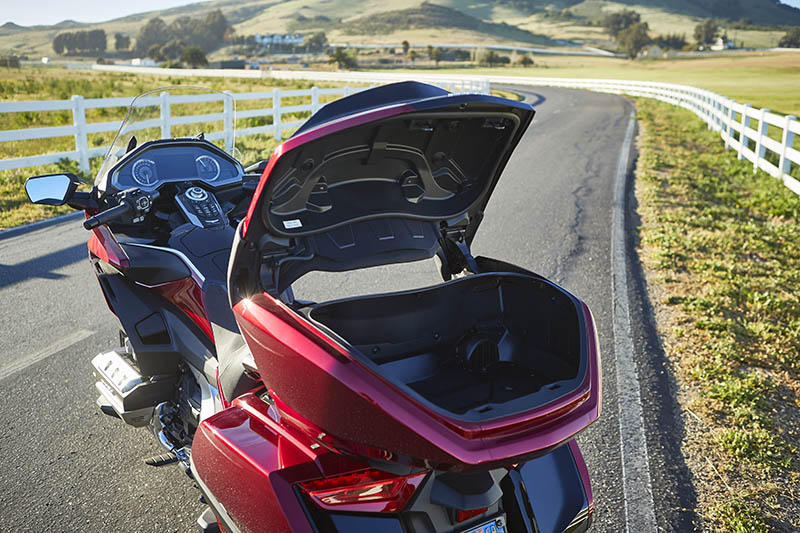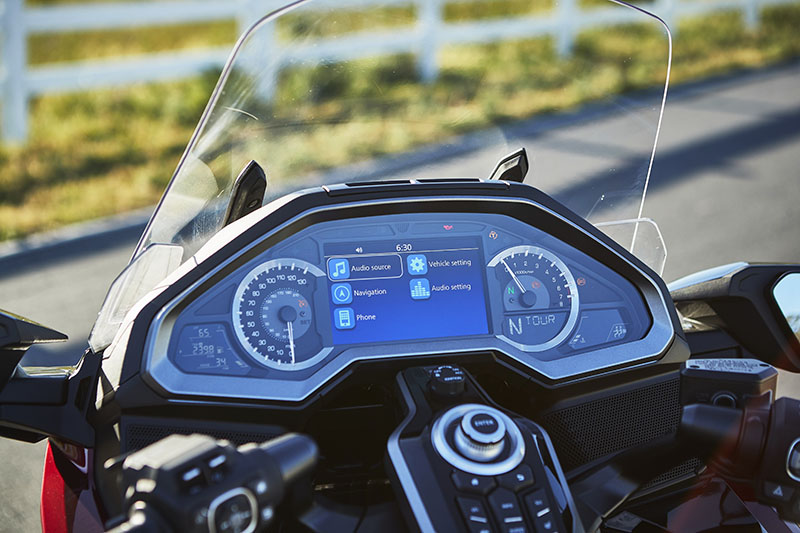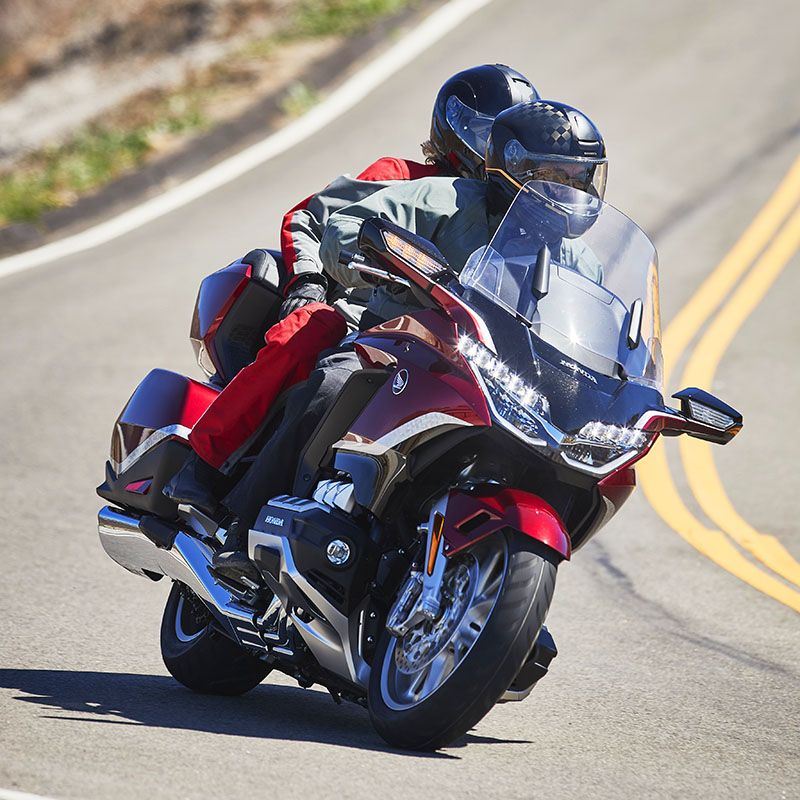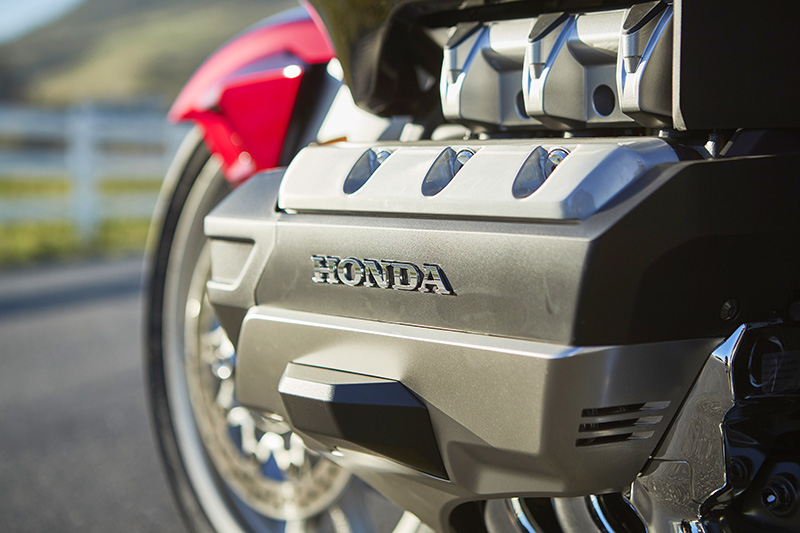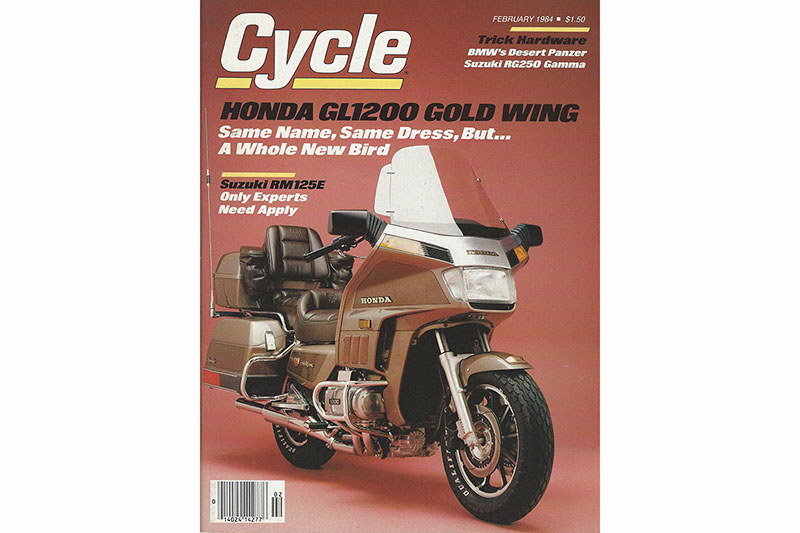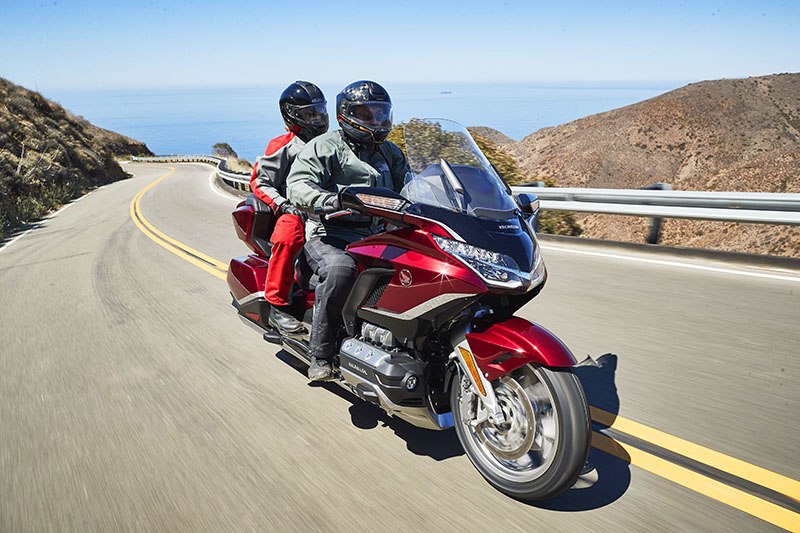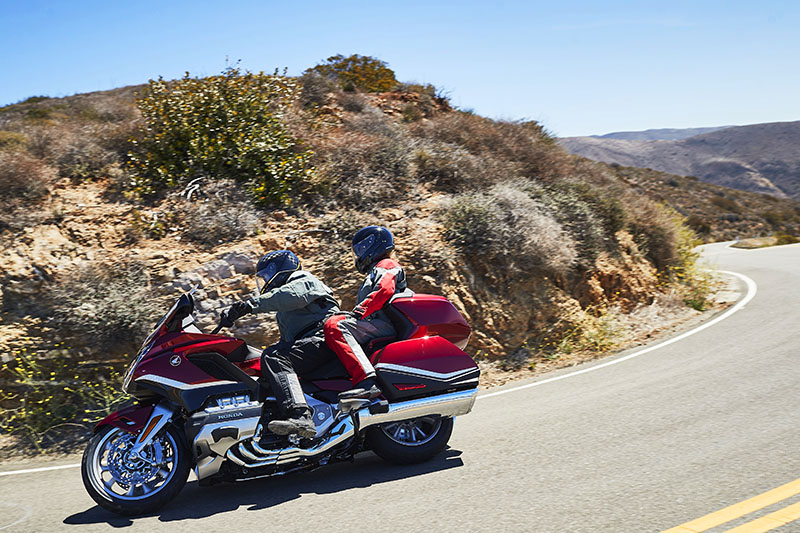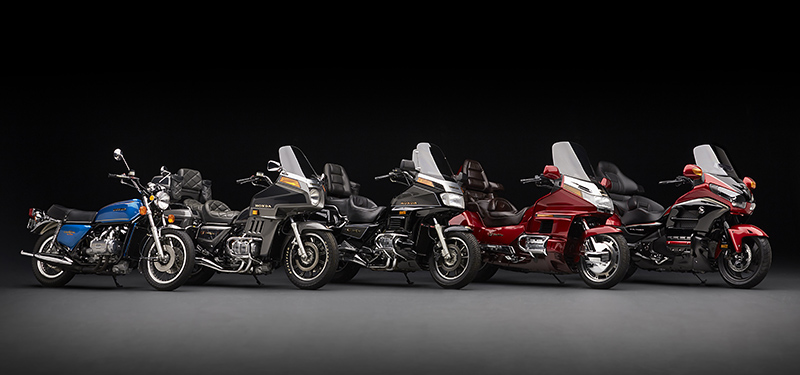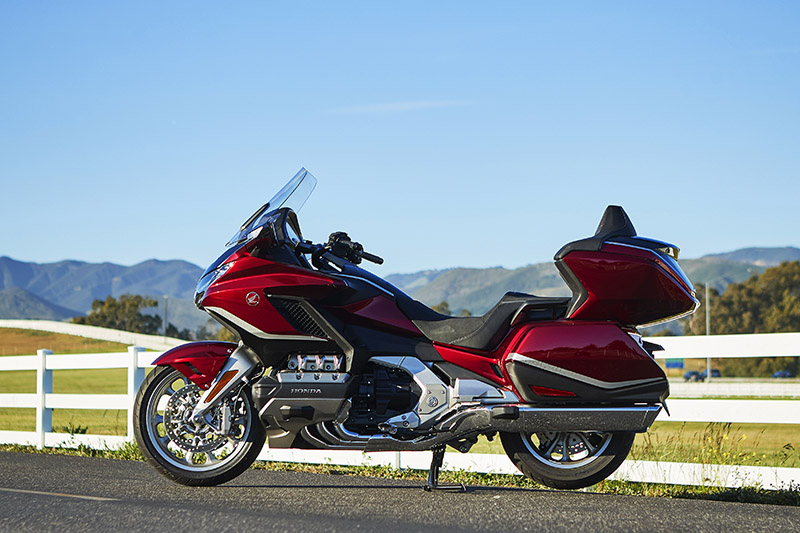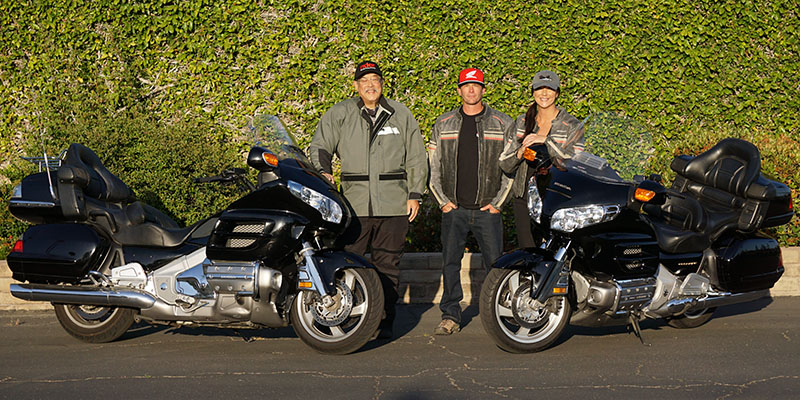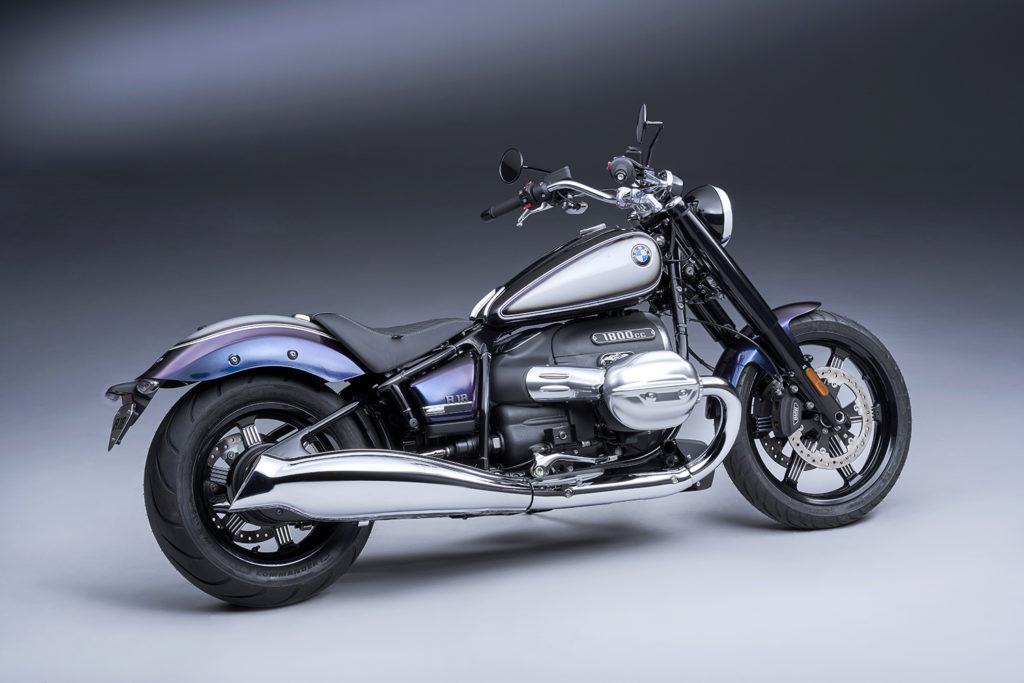
BMW Motorrad USA has released details of the latest updates and changes across the entire model lineup for 2022, and the introduction of the new M 1000 RR. We can expect to see the first examples arriving in US dealerships in the last quarter of 2021. The list includes details on pricing, equipment changes, and paint scheme updates for motorcycles and scooters. Also included are a comprehensive list of available upgrade packages, which have been streamlined and standardized across the range.
2022 BMW C 400 GT Scooter
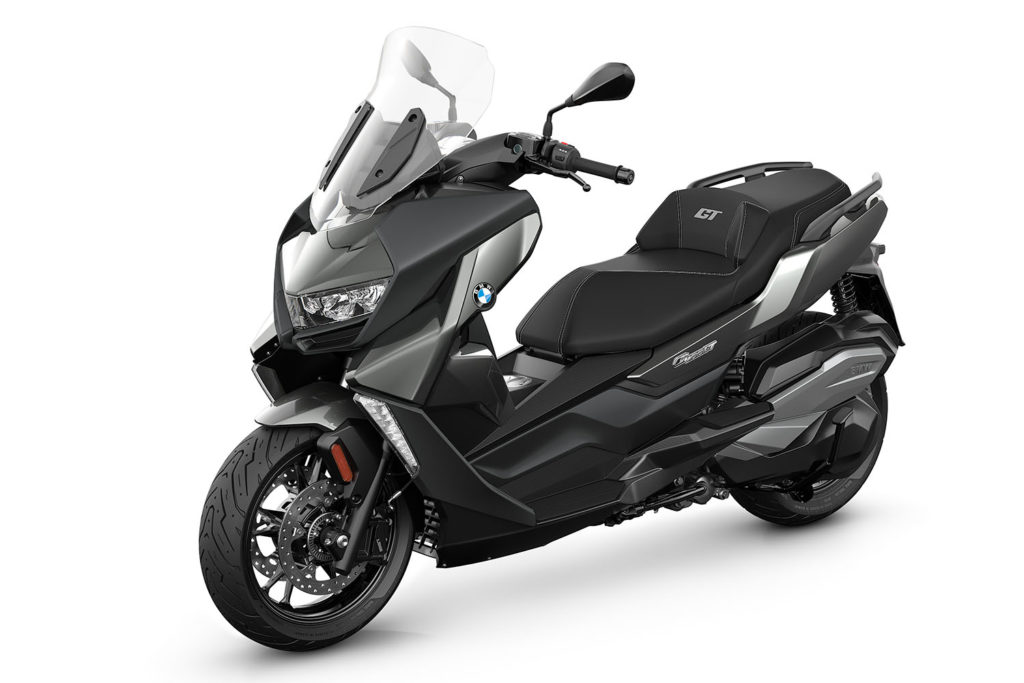
The only scooter in BMW’s 2022 lineup, we took a first look at the C 400 GT back in March. The Euro 5-compliant, 350cc engine delivers a claimed 34 horsepower and 26 lb-ft of torque, transmitted through a Constantly Variable Transmission.
Expected Availability: In dealers now
Base MSRP: $8,495
Equipment Changes: Updates for the 2022 model include an electronic throttle and engine management system, improvements to the catalytic converter, and enhancements to the engine. The ASC (traction control) system has been updated for 2022 and promises a more sensitive response in wet and slippery conditions. Additionally, the brakes have received new calipers with improved piston response and the forward storage compartment now features a 12-volt outlet and a USB charging socket.
Color Schemes: The C 400 GT comes in Alpine White as standard. Callisto Grey Metallic ($150) and Black Storm Metallic ($250) are optional premium alternatives.
2022 BMW G 310 R and G 310 GS
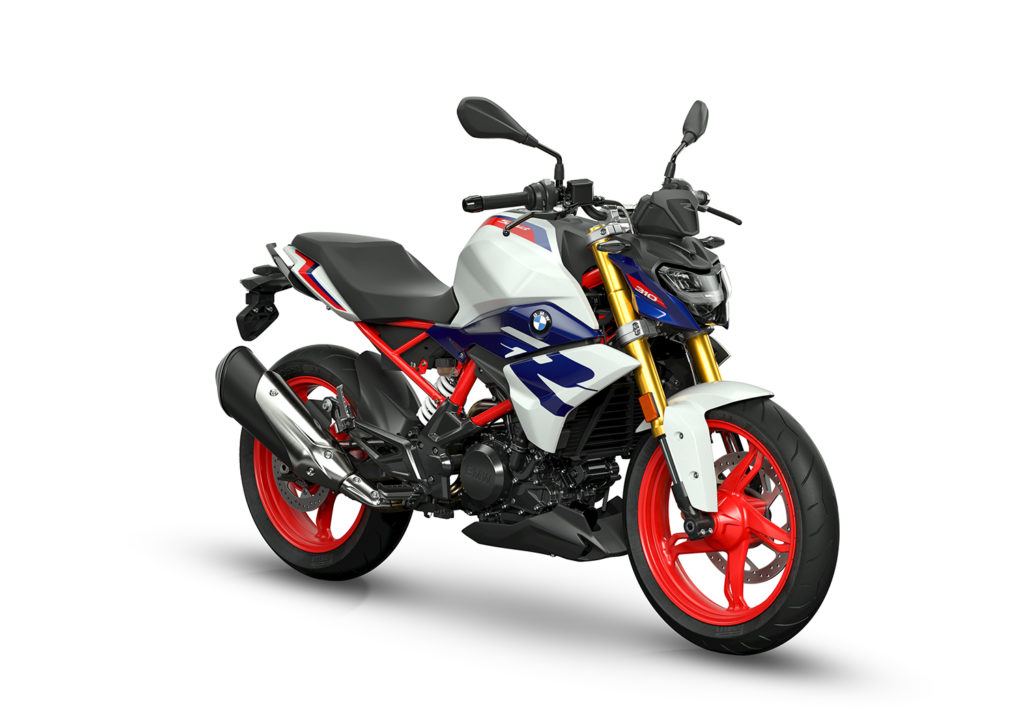
Rider covered the release of the 2021 G 310 R, which received several updates for that year, as did its sister model the G 310 GS, and changes for the new models are currently limited to color schemes.
G 310 R
Expected Availability: Q4 2021
Base MSRP: $5,045
Color Schemes: Cosmic Black 2 replaces Cosmic Black as the standard color, and Kyanite Blue Metallic is now available at a $250 premium.
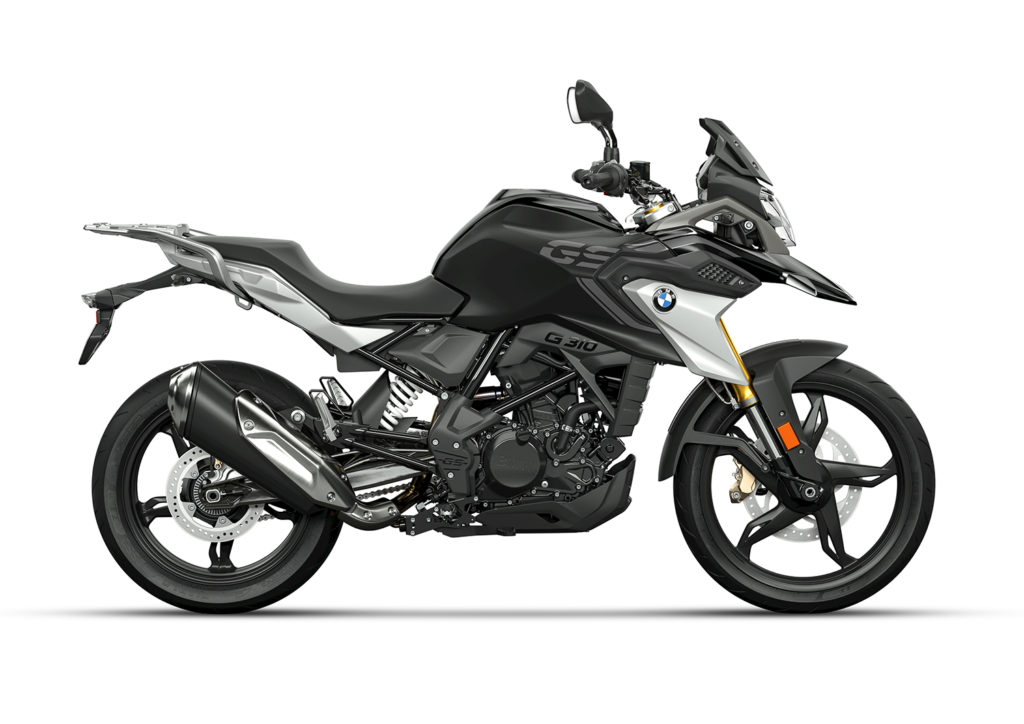
G 310 GS
Expected Availability: Q4 2021
Base MSRP: $5,954
Color Schemes: Polar White remains the standard paint scheme, but Cosmic Black 2 replaces Cosmic Black as a $250 option.
2022 BMW F 750 GS, F 850 GS, F 850 GS Adventure
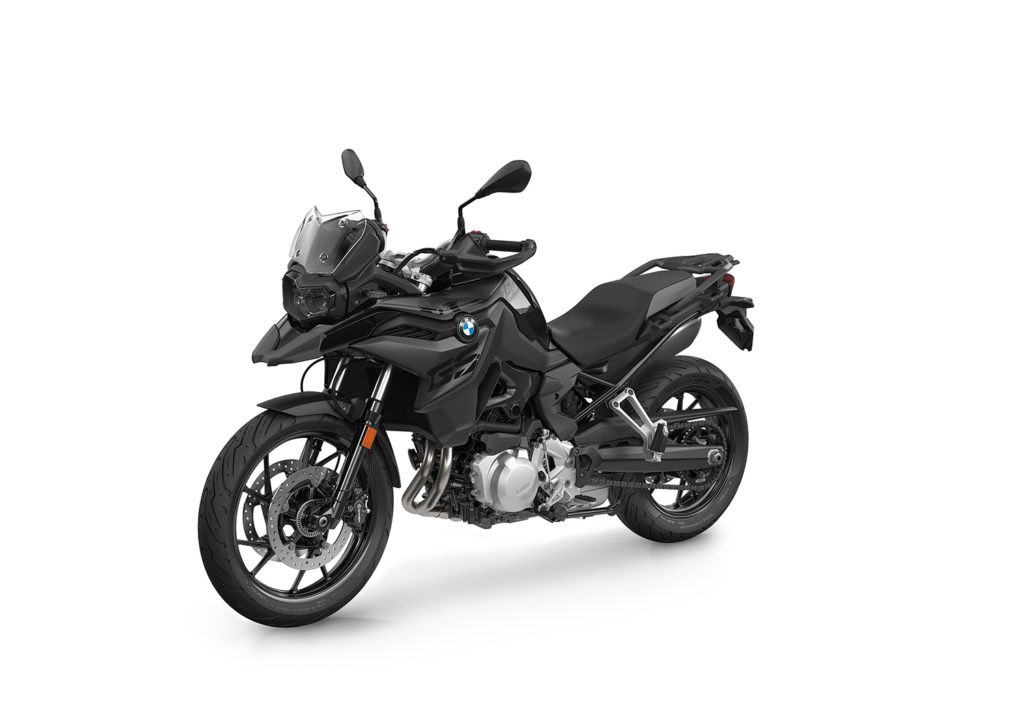
We road-tested the 2019 BMW F 750 and F 850 GS models when they were released in November 2018. The only changes slated for 2022 are color schemes and new upgrade packages.
F 750 GS
Expected Availability: Q4 2021
Base MSRP: TBA
Color Schemes: Light White is carried over as the standard color and Black Storm Metallic now replaces Black Storm as a $350 optional color. San Marino Blue Metallic ($260) is also carried over as an option.
Updated Upgrade Packages:
Select Package $1,000
GPS Prep
Cruise Control
Ride Modes Pro
Heated Grips
Dynamic Engine
Brake Control (new)
Luggage Rack (new)
.
Premium Upgrade Package $2,400
Select Package contents
LED Style Elements
Gear Shift Assist Pro (new)
Keyless Ride
Dynamic ESA
TPM tire pressure monitor
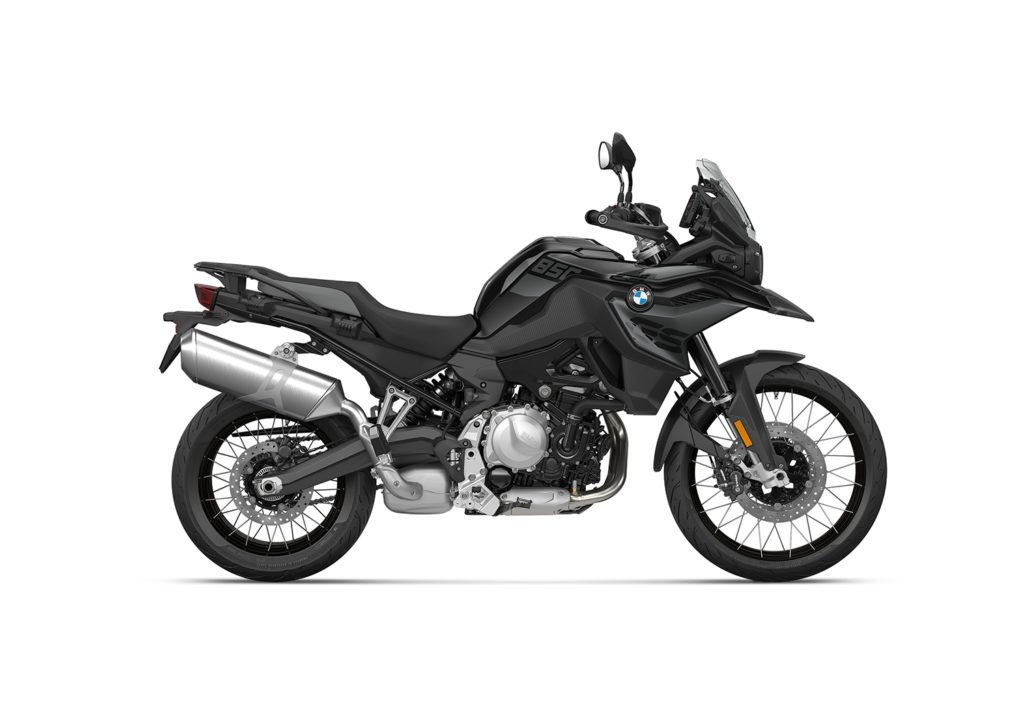
F 850 GS
Expected Availability: Q4 2021
Base MSRP: TBA
Color Schemes: Racing Red remains the standard color, while New Black Storm Metallic ($350) replaces Black Storm as an optional color along with Rallye Blue ($325), carried over from last year.
Updated Upgrade Packages:
Select Package $950
GPS Prep
Cruise Control
Ride Modes Pro
Heated Grips
Dynamic Engine Brake Control (new)
Luggage Rack (new)
.
Premium Package $2,350
Select Package contents
LED Style Elements
Gear Shift Assist Pro (new)
Keyless Ride
Dynamic ESA
TPM tire pressure monitor
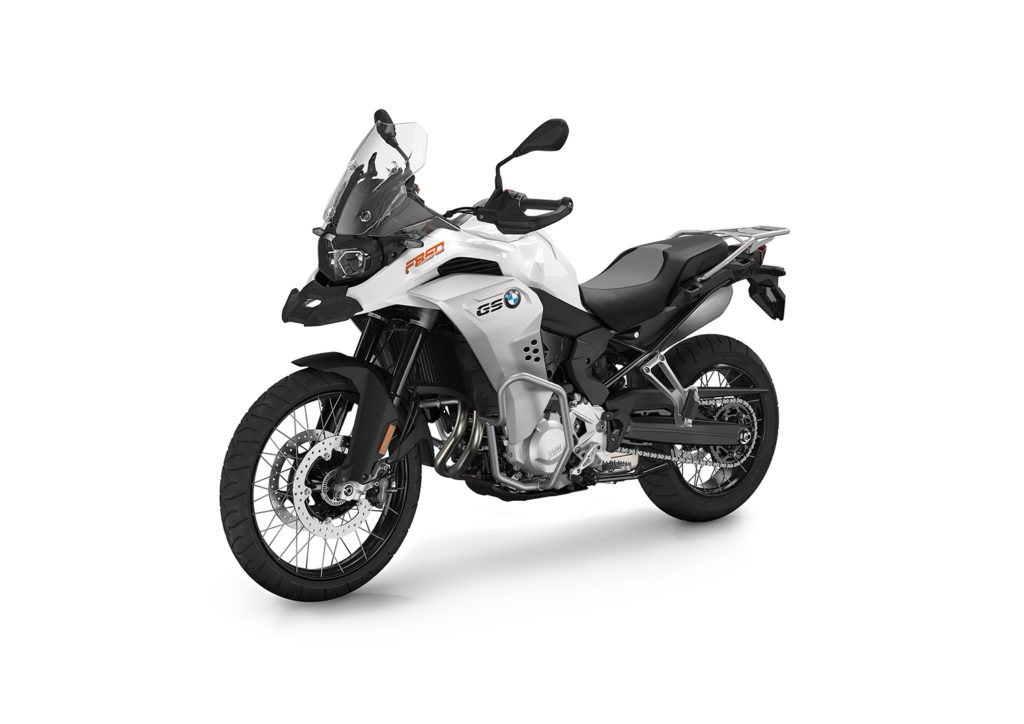
F 850 GS Adventure
Expected Availability: Q4 2021
Base MSRP: TBA
Color Schemes: Light White replaces Ice Gray as the standard color, Black Storm Metallic ($325) replaces Black Storm as an optional color. Kalamata Matte Metallic is also still available as a $350 option.
Updated Upgrade Packages:
Select Package $1,350
GPS Prep
Cruise control
LED fog lights (new)
Ride Modes Pro Heated grips
Aluminum side case holders
Dynamic Engine Brake Control
.
Premium Package $3,100
Select Package contents
LED Style Elements
Gear Shift Assist Pro (new)
Keyless Ride
Dynamic ESA
TPM tire pressure monitor
2022 BMW F 900 R and F 900 XR
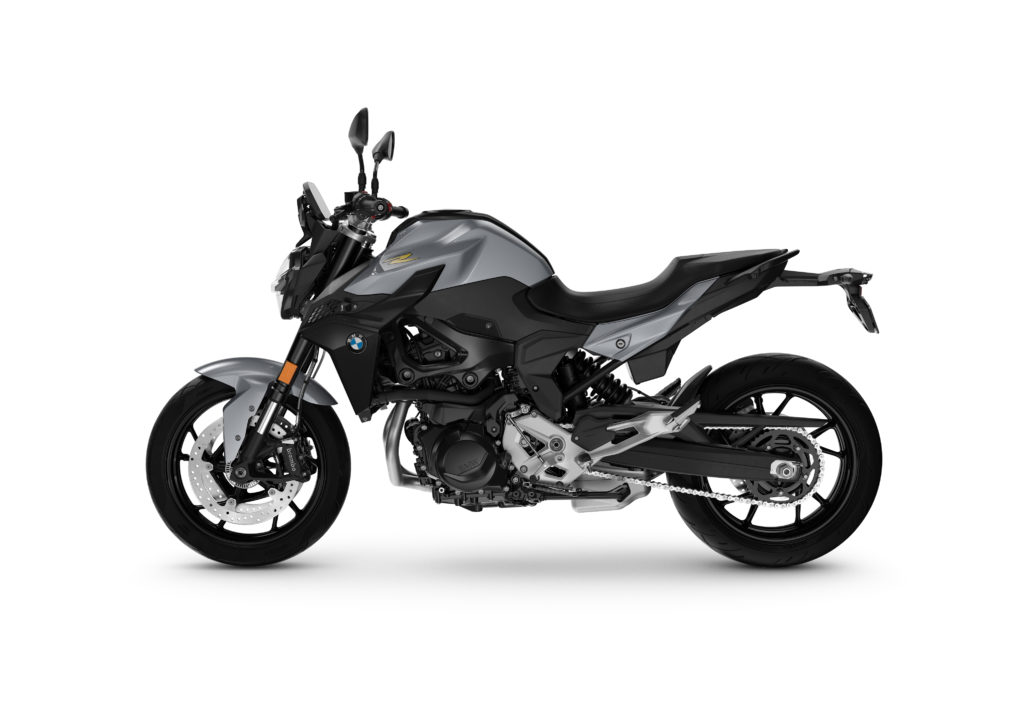
Rider Magazine published a road test review of the 2020 F 900 R and F 900 XR, newly released for that year. The R roadster and XR sport-adventure platforms both receive new color schemes and upgrade packages for 2022.
F 900 R
Expected Availability: Q4 2021
Base MSRP: $8,995
Color Schemes: Black Storm Metallic remains the standard color, while Bluestone Metallic ($300) replaces San Marino Blue as an optional color, and the classic BMW Racing white, blue and red scheme ($300) replaces Hockenheim Silver and Racing Red as the second option.
Updated Upgrade Packages:
Select Package $975
Heated Grips
TPM tire pressure monitor
Dynamic Traction Control
Gear Shift Assist Pro
Ride Modes Pro
ABS Pro
.
Premium Package $2,500
Select Package contents
Dynamic ESA
Headlight Pro
Adaptive Headlight
Dynamic Engine Brake Control
Keyless Ride
GPS Prep
Cruise Control
Saddle Bag Mounts
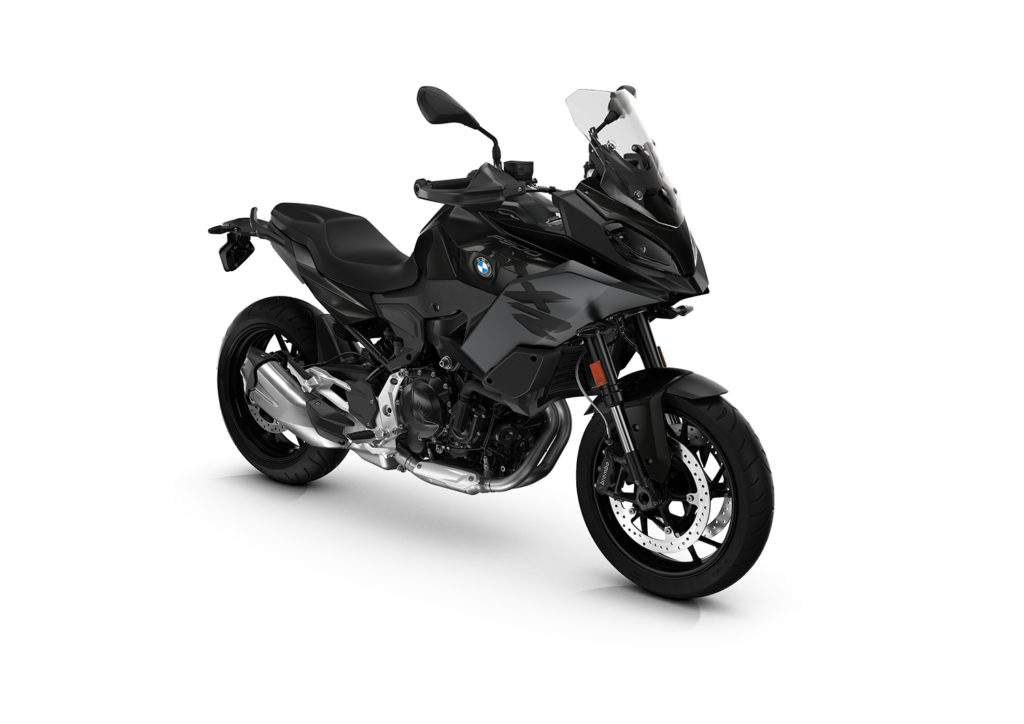
F 900 XR
Expected Availability: Q4 2021
Base MSRP: $11,695
Color Schemes: Light White is carried over as the standard color for the F 900 XR. Black Storm Metallic ($250) replaces Gelvanic Gold Metallic as an optional color, and Racing Red ($250) remains the second option.
Updated Upgrade Packages:
Select Package $950
GPS Prep
Cruise Control
Heated Grips
Saddle Bag Mounts
Dynamic Traction Control
Ride Modes Pro
ABS Pro
.
Premium Package $2,400
Select Package contents
Dynamic ESA
Keyless Ride
Center Stand
Headlight Pro
Adaptive Headlight
Gear Shift Assist Pro
Dynamic Engine Brake Control
TPM tire pressure monitor
2022 BMW R nineT, R nineT Pure, R nineT Scrambler and R nineT Urban G/S
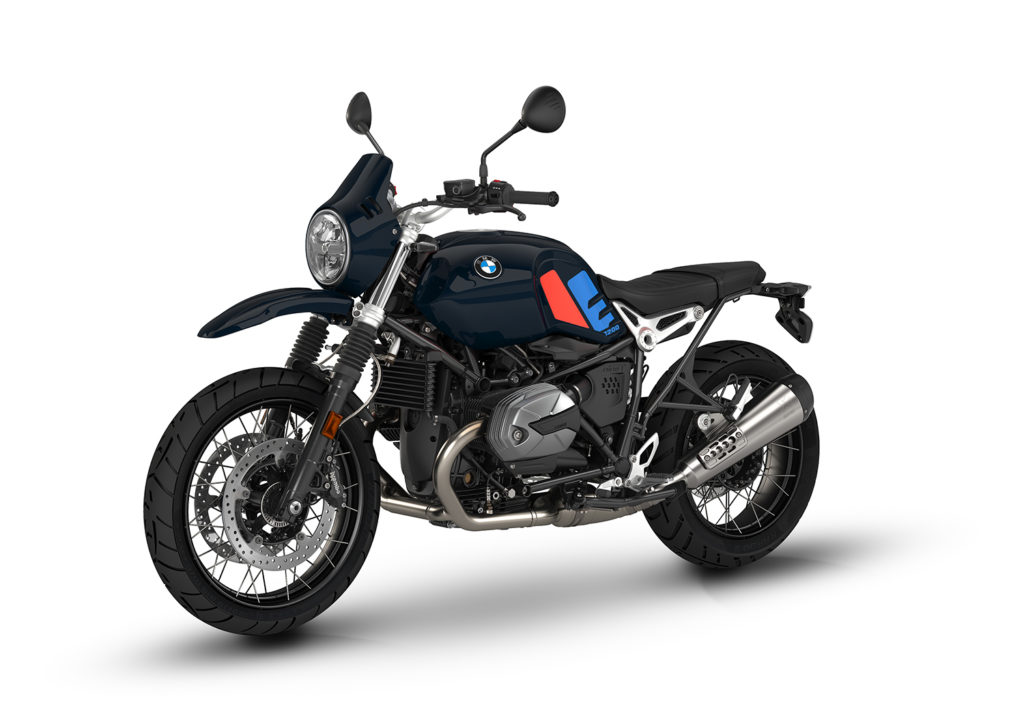
Updates for the 2021 R nineT models included changes to the engine for Euro 5 compatibility, as well as new LED headlights, improved ABS, and adjustable suspension. Rider published a summary in the October issue last year. Updates for 2022 are limited to available upgrade packages, and color schemes across the R nineT range will remain the same as last year’s model except for the G/S.
R nineT
Expected Availability: Q4 2021
Base MSRP: $15,945
Color Schemes: Black Storm Metallic is carried over as the standard color. Optional colors remain the same as last years’s model: Aluminum Matte ($1,000), Night Black / Aluminum Matte ($1,100), and Mineral White Metallic/Aurum ($1,050).
Updated Upgrade Package: Select Package $1,000
Ride Modes Pro
Heated Grips
Cruise Control
Adaptive Headlight
Headlight Pro (new)
Dynamic Engine Brake Control
Dynamic Traction Control
R nineT Pure
Expected Availability: Q4 2021
Base MSRP: $10,995
Color Schemes: Mineral Grey Metallic is carried over as the standard color. Optional colors remain the same as last years’s model: Aluminum, Black Storm Metallic/Racing Red ($590), Cosmic Blue Metallic/Light White ($590) and Teal Blue Metallic Matte ($250).
R nineT Scrambler
Expected Availability: Q4 2021
Base MSRP: $13,495
Equipment Changes: New optional off-road tires.
Color Schemes: Granite Grey Metallic remains the standard color. Optional colors include, Kalamata Metallic ($200), Black Storm Metallic/Racing Red ($590), and Cosmic Blue Metallic/Light White ($590.
Updated Upgrade Package: Select Package $1,000
Ride Modes Pro
Heated Grips
Cruise Control
Adaptive Headlight
Headlight Pro (new)
Dynamic Engine Brake Control
Dynamic Traction Control
R nineT Urban G/S
Expected Availability: Q4 2021
Base MSRP: $13,995
Color Schemes: The 40 Years of GS Edition is no longer available and Blue Metallic is the only available color.
Updated Upgrade Package: Select Package $1,000
Ride Modes Pro
Heated Grips
Cruise Control
Adaptive Headlight
Headlight Pro (new)
Dynamic Engine Brake Control
Dynamic Traction Control
Black Cross Spoked Wheels
2022 BMW R 1250 R and R 1250 RS
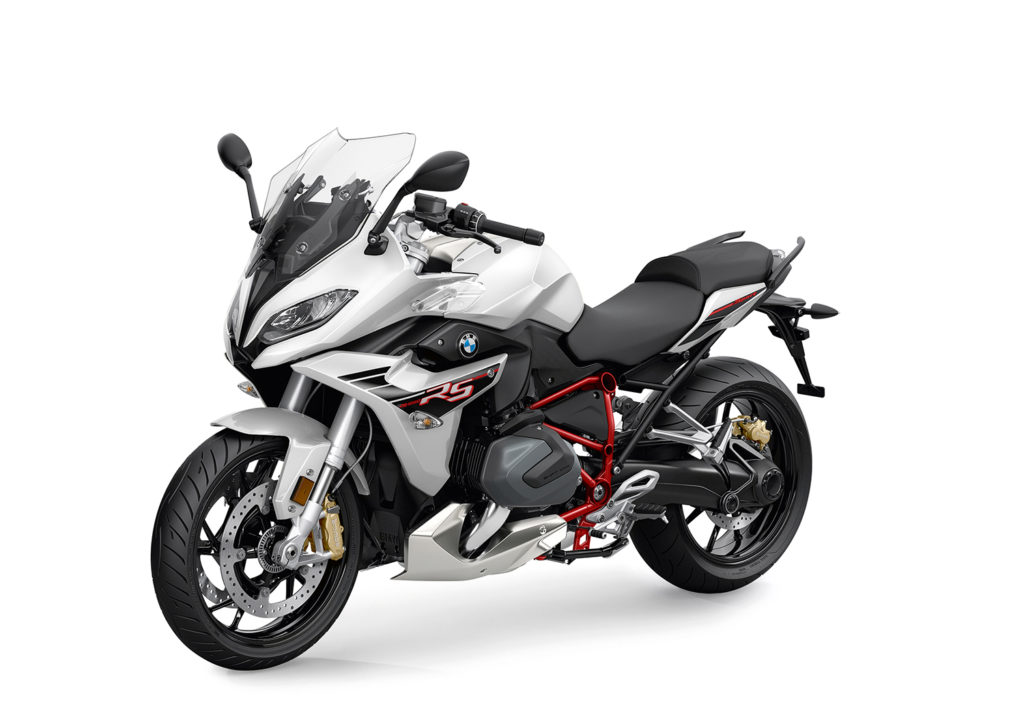
Rider covered the extensive changes made to these models in 2019 with a First Look Review. Updates for 2020 are limited to upgrade packages and, as with most of the other models, these are now streamlined. Sport and Select packages have been replaced by a single Premium package.
R 1250 R
Expected Availability: Q4 2021
Base MSRP: $14,995
Color Schemes: Black Storm Metallic is carried over as standard color, as are Mineral Grey Metallic ($500), and BMW Racing white, blue and red ($600) optional schemes.
Updated Upgrade Package: Premium Package $2,525
Chrome Exhaust
Heated Grips
TPM tire pressure monitor
Gear Shift Assist Pro
Ride Modes Pro
Dynamic Engine Brake Control
ABS Pro
Dynamic Traction Control
Keyless Ride
GPS Prep
Cruise Control
R 1250 RS
Expected Availability: Q4 2021
Base MSRP: $15,695
Color Schemes: Black Storm Metallic is carried over as the standard color. Imperial Blue Metallic ($425) is also retained as an optional color, and Light White ($525) replaces Austin Yellow Metallic as the second color option.
Updated Upgrade Package: Premium Package $3,175
Chrome Exhaust
Heated Grips
Dynamic ESA
Keyless Ride
GPS Prep
Cruise Control
Center Stand
Saddle Bag Mounts
Dynamic Traction Control
Gear Shift Assist Pro
Ride Modes Pro
ABS Pro
2022 BMW R 1250 GS, R 1250 GS Adventure, and R 1250 RT
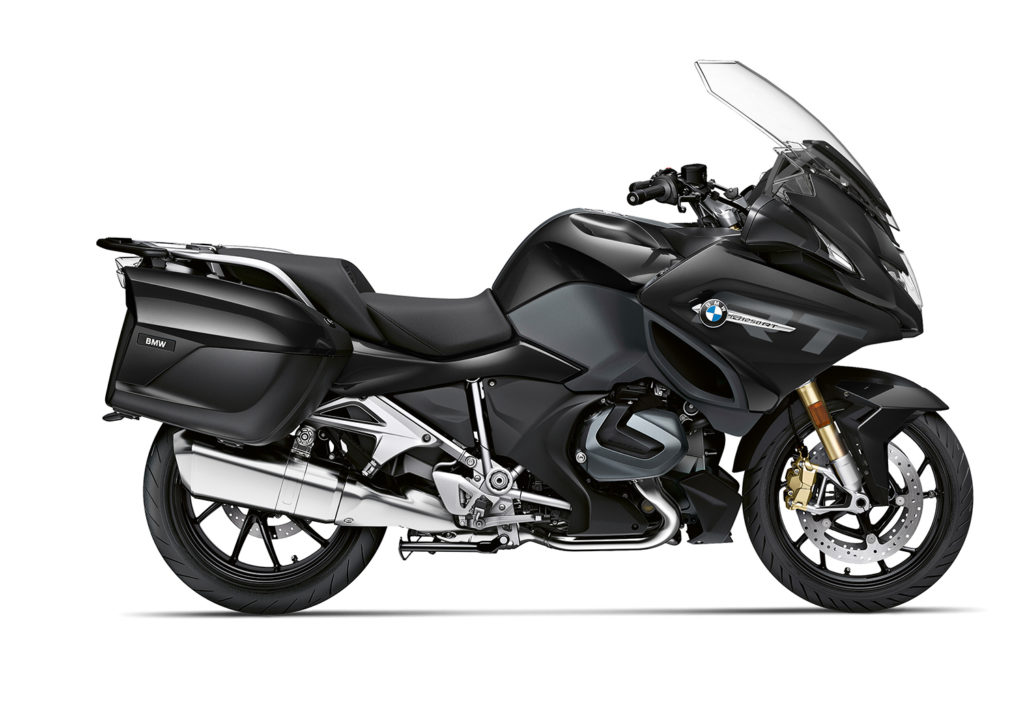
Rider covered the extensive changes made to these models in 2019 with a First Ride Review. Updates for 2020 are limited to upgrade packages, and as with most of the other models, these are now streamlined. Comfort, Dynamic, Sport and Touring packages have been replaced by a Select and Premium packages across the range.
R 1250 GS
Expected Availability: Q4 2021
Base MSRP: $17,995
Color Schemes: Light White is carried over as a standard color. Black Storm Metallic Black/Achat Grey ($950), Rallye (Light White / Racing Blue / Racing Red) ($1,150) and Black Storm Metallic 40 Years of GS Edition ($2,050) are all retained as optional colors.
Updated Upgrade Packages:
Select Package $1,900
Keyless Ride
Heated Grips
Chrome Exhaust
GPS Prep
Cruise Control
Hand Protectors
Case Holders
Seat Heating
TPM tire pressure monitor
.
Premium package $4,000
Select Package contents
Dynamic ESA
Gear Shift Assist Pro
Ride Modes Pro
Dynamic Engine Brake Control
Adaptive Headlight
Headlight Pro
Cruising Lighting
R 1250 GS Adventure
Expected Availability: Q4 2021
Base MSRP: $20,345
Color Schemes: Ice Grey is carried over as the standard color and Black Storm Metallic Black/Achat Grey ($600), Rallye (Light White / Racing Blue / Racing Red) ($800) and Black Storm Metallic 40 Years of GS Edition ($1,800 are all retained as optional colors.
Updated Upgrade Packages:
Select Package $1,875
Keyless Ride
Heated Grips
Chrome Exhaust
GPS Prep
Cruise Control
Pannier Mounts
Seat Heating
TPM tire pressure monitor
.
Premium Package $4,325
Select Package contents
Dynamic ESA
Gear Shift Assist Pro
RideModes Pro
Dynamic Engine Brake Control
Adaptive Headlight
Headlight Pro
LED Auxiliary Lights
Cruising Light
R 1250 RT
Expected Availability: Q4 2021
Base MSRP: $19,695
Equipment Changes: New freely-assignable Favorite function button.
Color Schemes: Alpine White is carried over as the standard color. New Black Storm Metallic ($525) replaces Manhattan Metallic as an optional color. Mineral White Metallic ($1,995) and Racing Blue Metallic ($650) are also carried over as optional colors.
Updated Upgrade Package: Premium Package $4,500
Keyless Ride
Chrome Exhaust
Central Locking
Seat Heating
Alarm
Bluetooth Connectivity (new)
12V socket
Dynamic ESA
Gear Shift Assist Pro
Ride Modes Pro
Active Cruise Control
Adaptive Headlight
Dynamic Engine Brake Control
Headlight Pro
Auxiliary Lights
TPM tire pressure monitor
2022 BMW R 18 and R 18 Classic

Expected Availability: Q4 2021
Base MSRP: TBA
Equipment Changes: Reverse assistance and black drivetrain.
Color Schemes: Galaxy Dust Metallic/Titanium Silver 2 Metallic has been added as optional color scheme (see Upgrade Packages), and the First Edition scheme is no longer available.
Updated Upgrade Packages:
Option 719 Design Package AERO – The Option 719 Design Package AERO includes cylinder head covers, front engine cover and left and right intake snorkel covers in aluminum with a brushed, anodized finish. The cylinder head covers feature finely wrought air vents reminiscent of the “streamliners” of the 1920s and 1930s. The highlight is a badge on the front and side covers: This is made of solid copper which is chrome-plated and partially finished in white. The white paint enclosing the number sequence “719” is reminiscent of historical emblems that were typically lined with enamel during that era.
Option 719 seat – The Option 719 seat is an exclusive alternative to the standard seat found on the R 18 and R 18 Classic. In addition to the standard seat height, it offers diamond-shaped quilted embossing and an embroidered BMW logo and the 719 emblem on the side.
Option 719 Paint finish Galaxy Dust metallic/ Titanium Silver 2 metallic – Galaxy Dust metallic is a finish that changes in color spectrum from violet to turquoise blue, depending on the light. In addition, the color pigment creates a unique visual effect when exposed to sunlight. This special finish is combined with a Titanium Silver 2 metallic mirror on the fuel tank. The transition between the two-color surfaces consists of a hand-applied smoke effect familiar from the legendary R 90 S. In addition, the mirror surface is surrounded by a classic white double pin stripe.
Option 719 Wheels AERO and ICON – The two Option 719 wheels – AERO and ICON in matt silver and matt black, respectively, provide a refined and sophisticated look to the R 18 and R 18 Classic. The cast alloy wheels feature a six-spoke design. The milled ribs of the spokes are a real eye-catcher. The milled areas give the aluminum a contrast to the painted surfaces – hence the name Contrast Cut.
2022 BMW S 1000 R
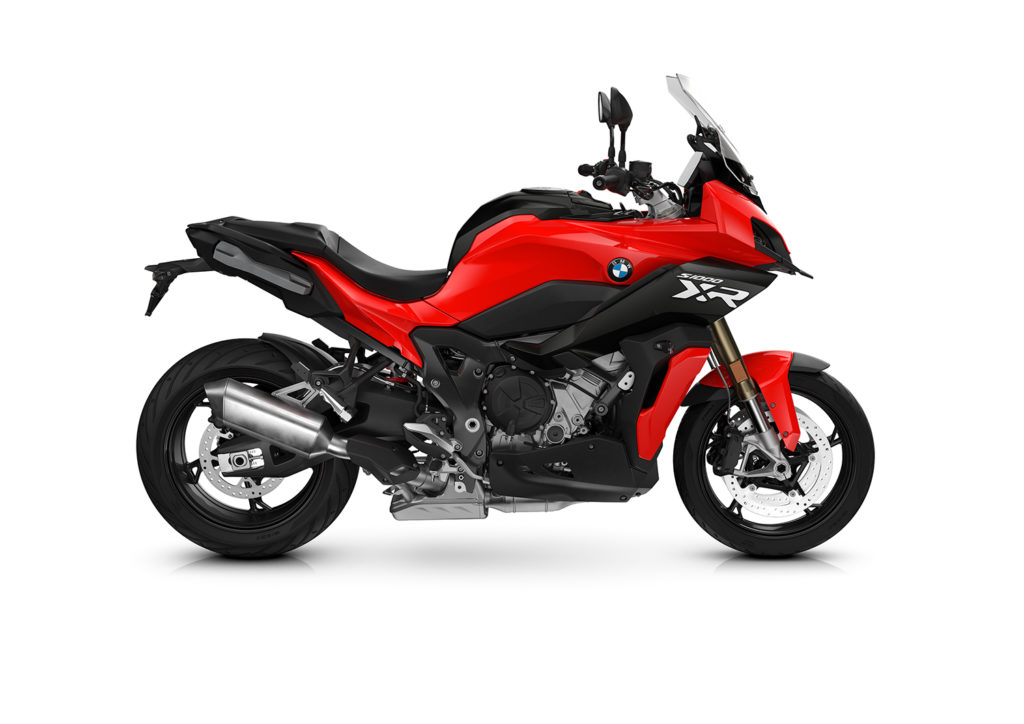
Expected Availability: In dealers now
Base MSRP: $14,545
2022 BMW S 1000 XR
Expected Availability: Q4 2021
Base MSRP: $17,945
Color Schemes: Racing Red replaces Ice Grey as the standard color. New Black Storm Metallic 2 ($475) and Light White with M Package ($2,600) are optional colors.
Updated Upgrade Packages:
Select Package $650
Heated Grips
Tire pressure monitor
Luggage Grid
M Package $2,600
Light White paint
M Endurance Chain
Sport Muffler
M Sport Seat
M Lightweight Battery
Sport Windshield
M Forged Wheels
Premium Package $2,650
Select Package contents
GPS Prep
USB Socket
Hand Protection (new)
Center Stand (new)
Keyless Ride
Dynamic ESA Pro
Gear Shift Assist Pro
Cruise Control
Adaptive Headlight
LED Auxiliary Lights
2022 BMW S 1000 RR
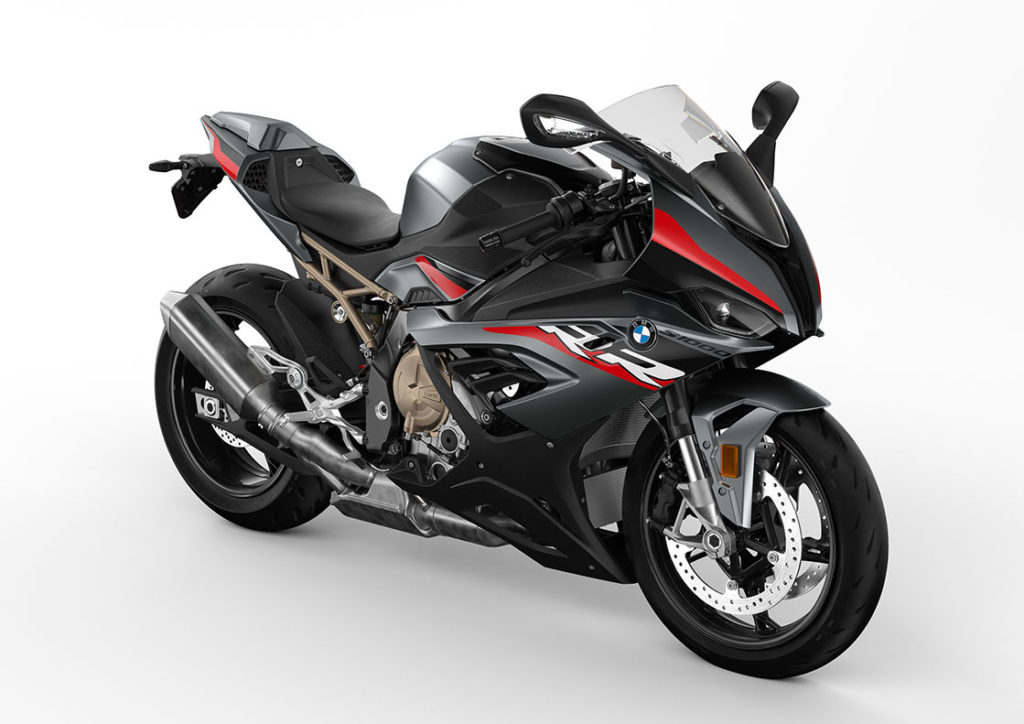
Expected Availability: Q4 2021
Base MSRP: $16,995
Color Schemes: Black Storm Metallic carries over as the standard color. Mineral Gray Metallic ($375) and Light White/Racing Blue/Racing Red ($2,250 with M Package) are optional colors.
Updated Upgrade Packages:
Premium Package $2,825
Endurance Chain
Sports Muffler
Dynamic Damping Control
Ride Modes Pro
USB Socket
Heated Grips
Cruise Control
TPM tire pressure monitor
.
M Package $2,250
Blue M Brake Calipers (new)
M Brake Calipers (new)
Black Fuel Filler Cap (new)
M GPS LapTrigger software (new)
M Sport Seat
Lightweight Battery
Forged Wheels (new)
New 2022 BMW M 1000 RR
The new M RR uses the S 1000 RR’s water-cooled four-cylinder in-line engine with BMW ShiftCam technology for varying valve timing and valve lift that has been modified comprehensively. With a claimed peak power of 212 HP and maximum torque of 113 Nm, the M RR engine has undergone extensive technical optimization. Including new 2-ring forged pistons from Mahle, adapted combustion chambers, increased compression, longer and lighter titanium connecting rods from Pankl, slimmer and lighter rocker arms, fully machined intake ports with new duct geometry, as well as a titanium exhaust system.
In addition to a race specified engine, body styling has been heavily influenced by the track. M winglets and high windscreen promise later braking and earlier accelerating with more stability in the corners thanks to the aerodynamic downforce without increasing drag.
Other notable features include two adjustable characteristic throttle curves for optimum response characteristics, threefold adjustable engine braking, quickhifter, incorporated pit lane speed-limiter, hill start assistance, race inspired chassis design and geometry, optimized wheel load distribution and extended adjustability of the swinging arm pivot point. In addition the 6.5-inch TFT display with exclusive M logo animation and OBD interface that can be used with activation code for the M GPS data logger and M GPS laptrigger.
Expected Availability: Q4 2021
Base MSRP: $32,495
Color Schemes: Light White with M Package is solely available color.
Upgrade Package: All US models will be equipped withe the M Competition Package.
M Brakes (new to BMW Motorrad)
M Carbon Wheels
M GPS Laptrigger
Lightweight M Battery
USB charging socket in the rear
Integrated LED light units and heated grips
Lightweight swinging arm
DLC-coated M endurance chain
Passenger package including tail-hump cover
The post BMW Announces 2022 Motorcycle Updates first appeared on Rider Magazine.
Source: RiderMagazine.com

